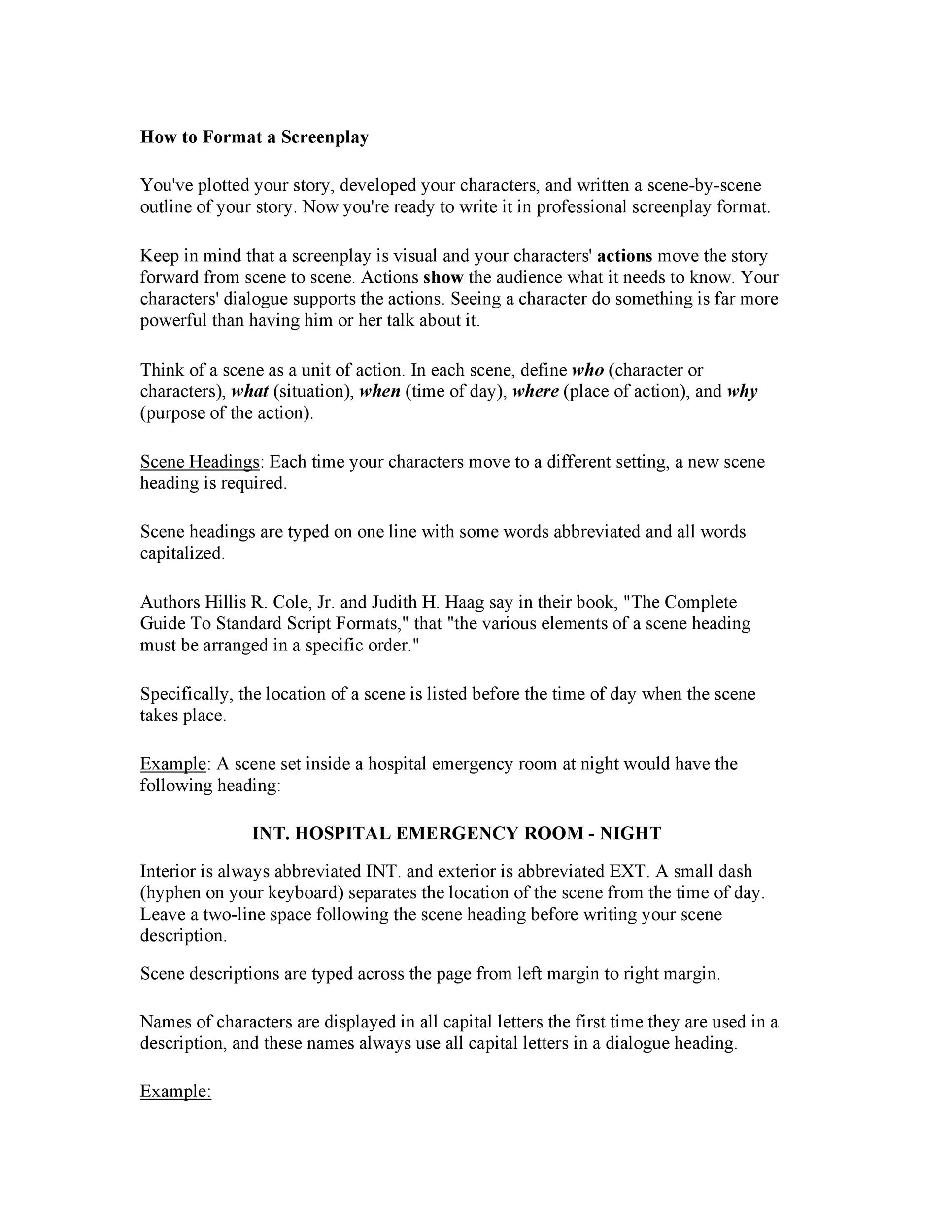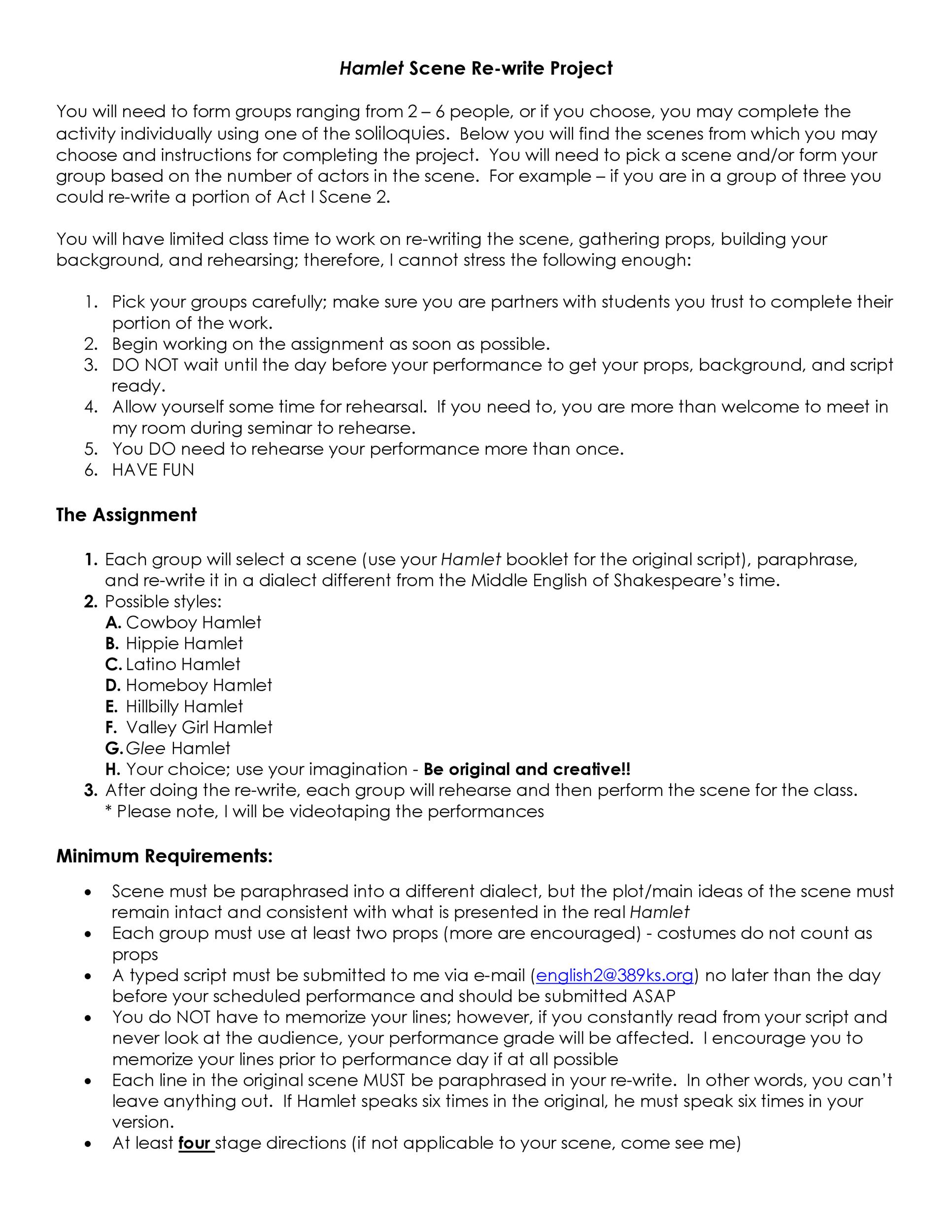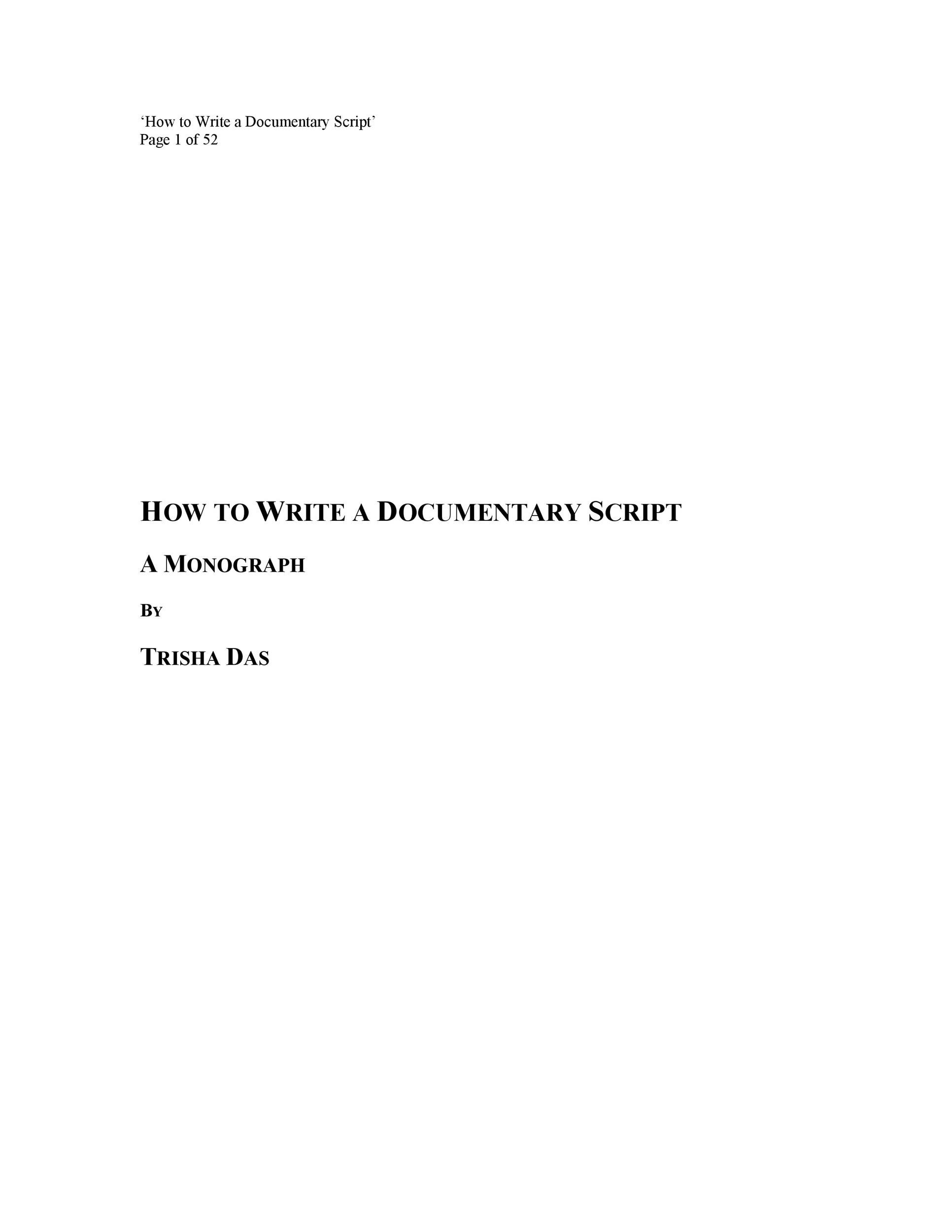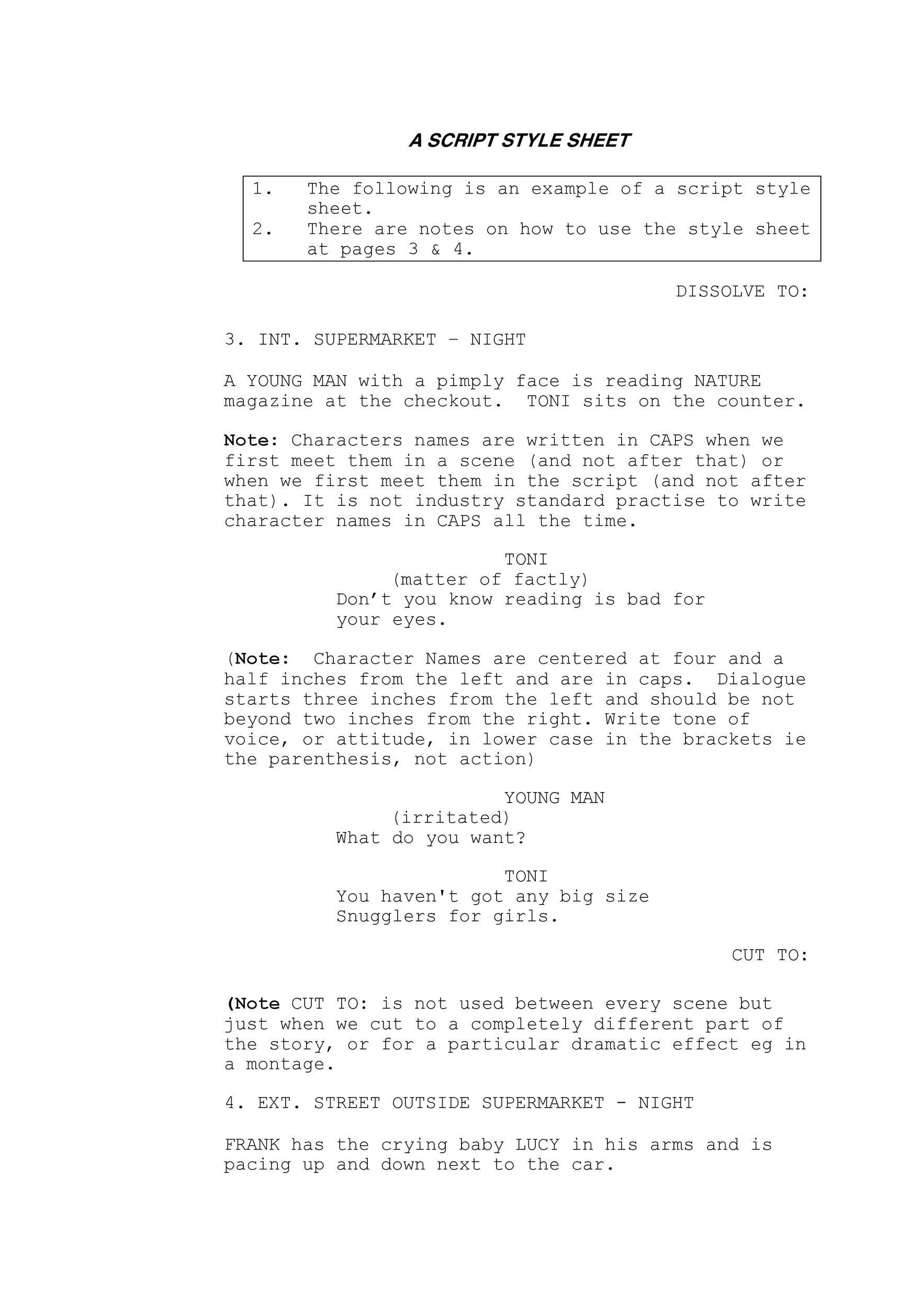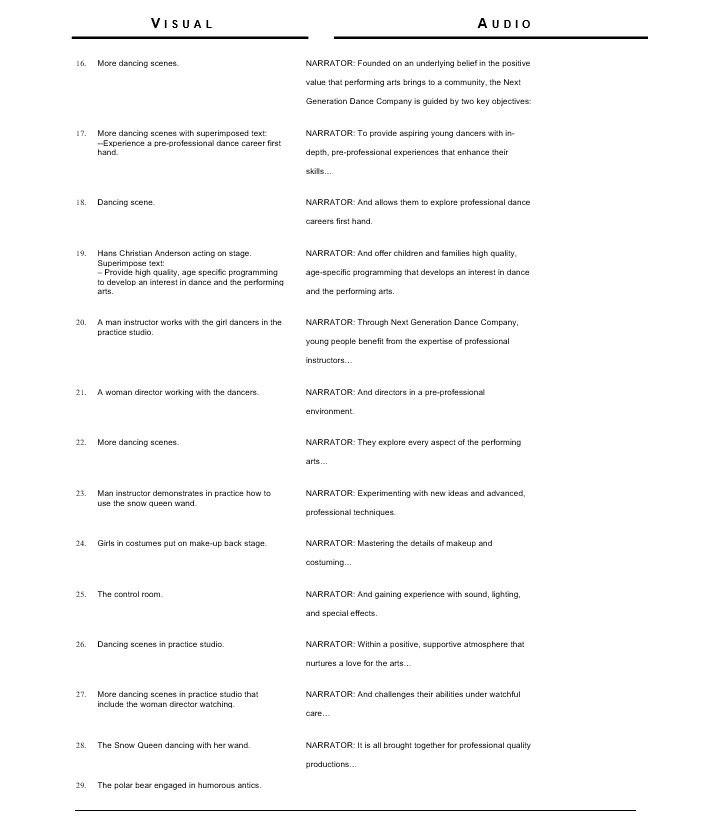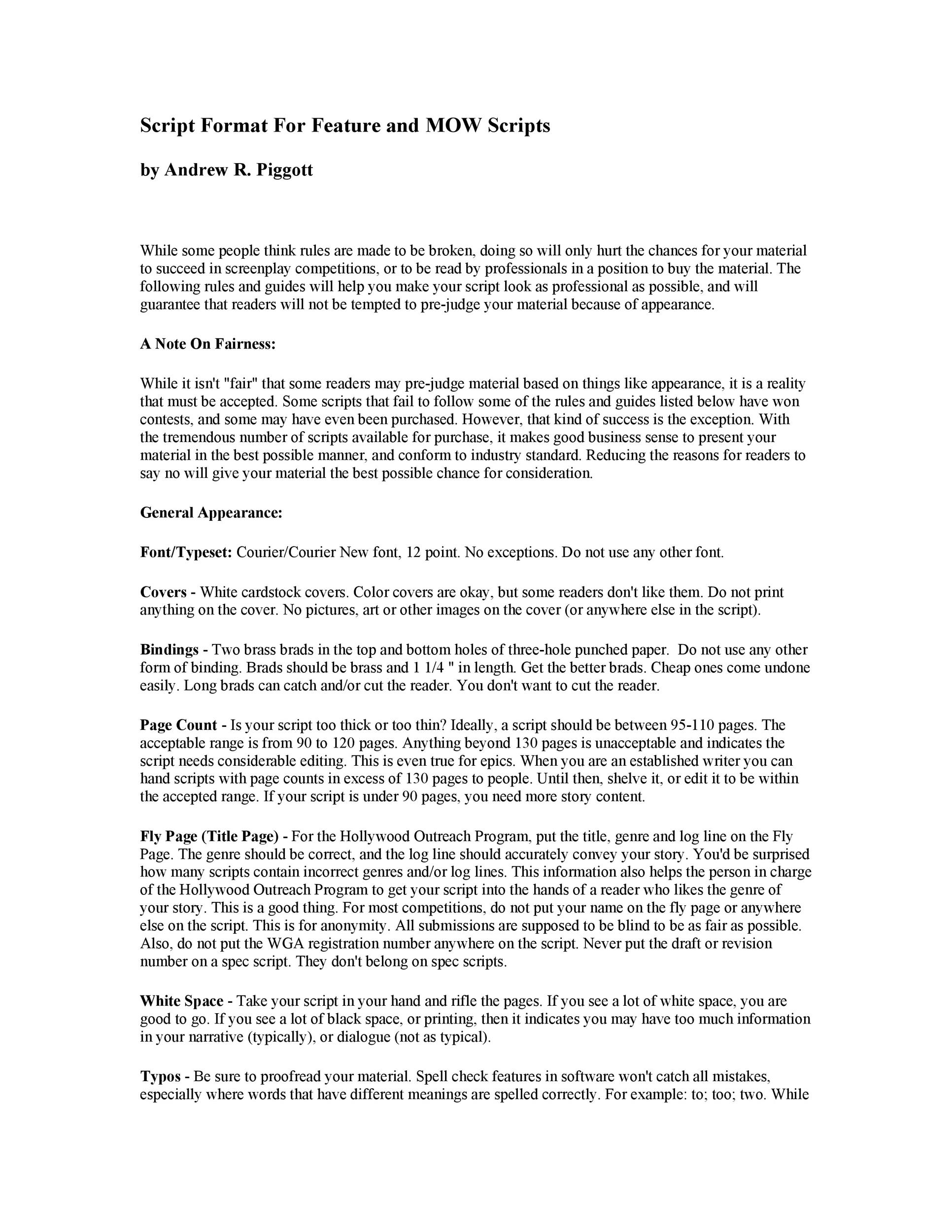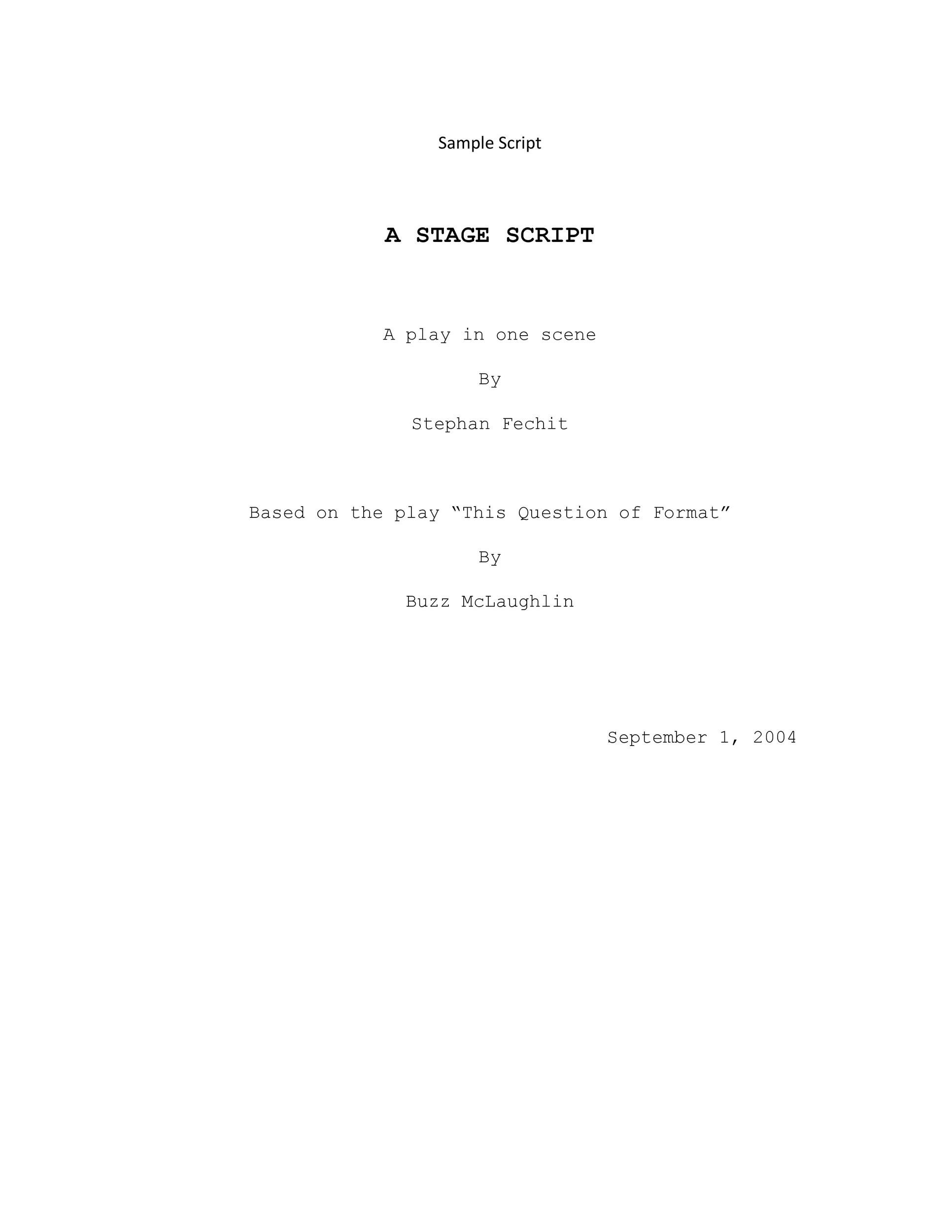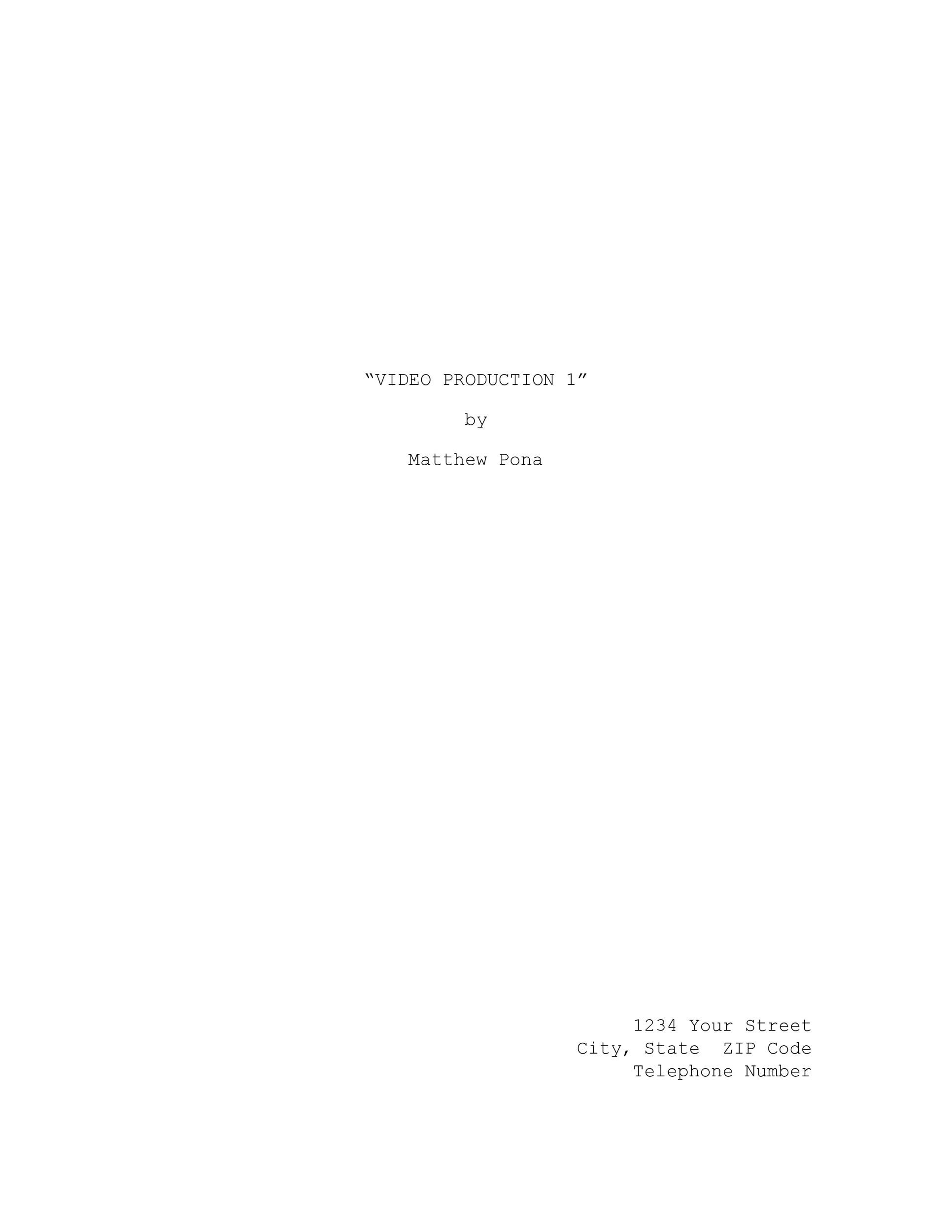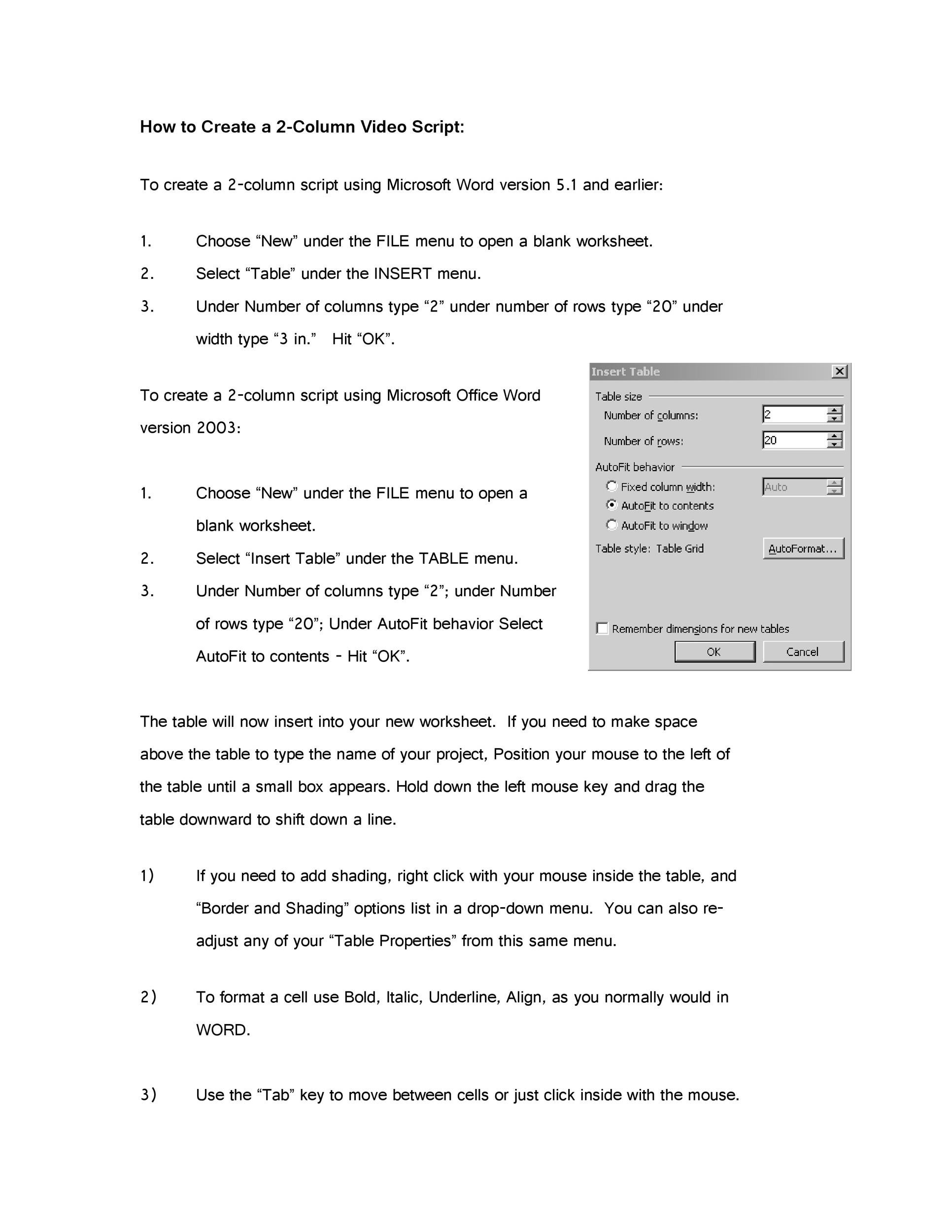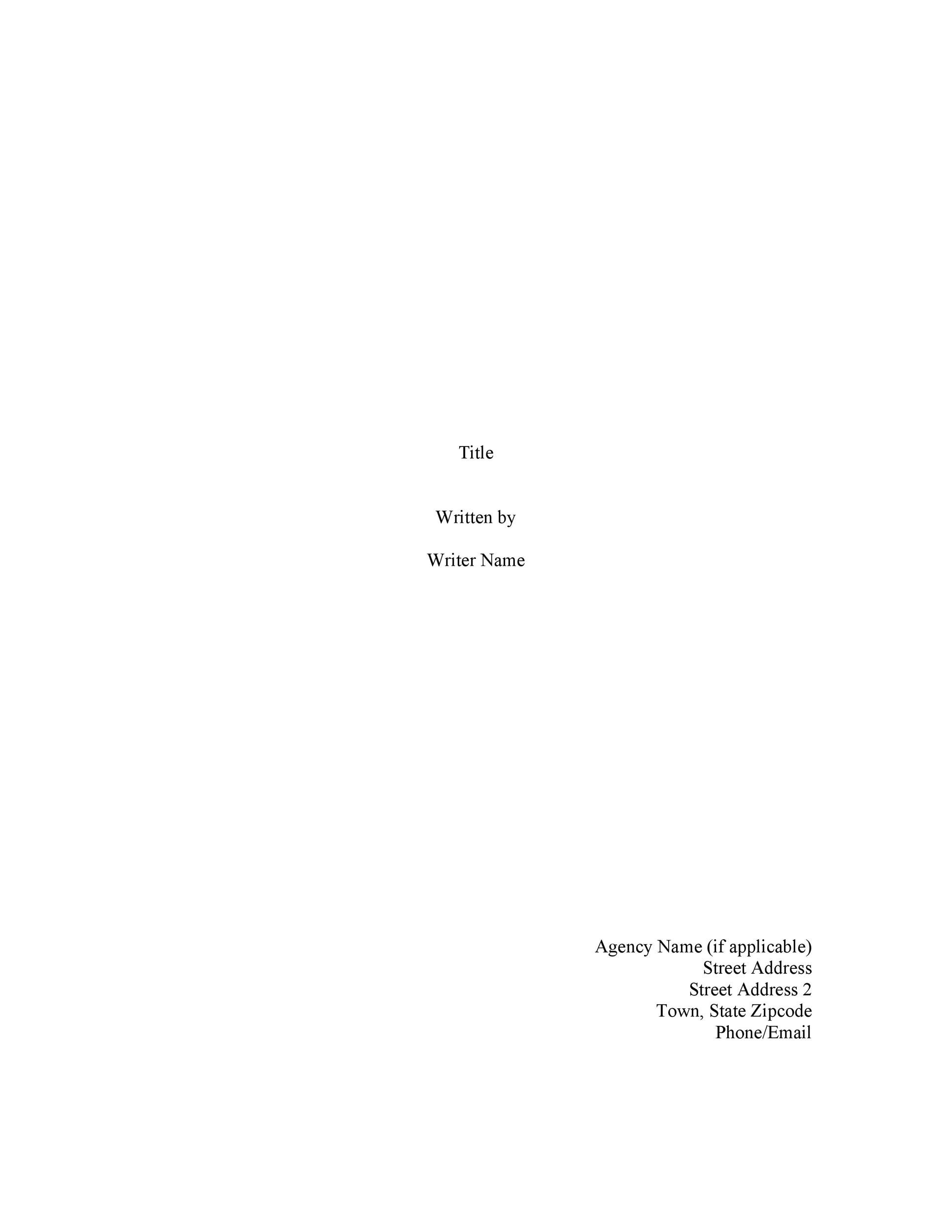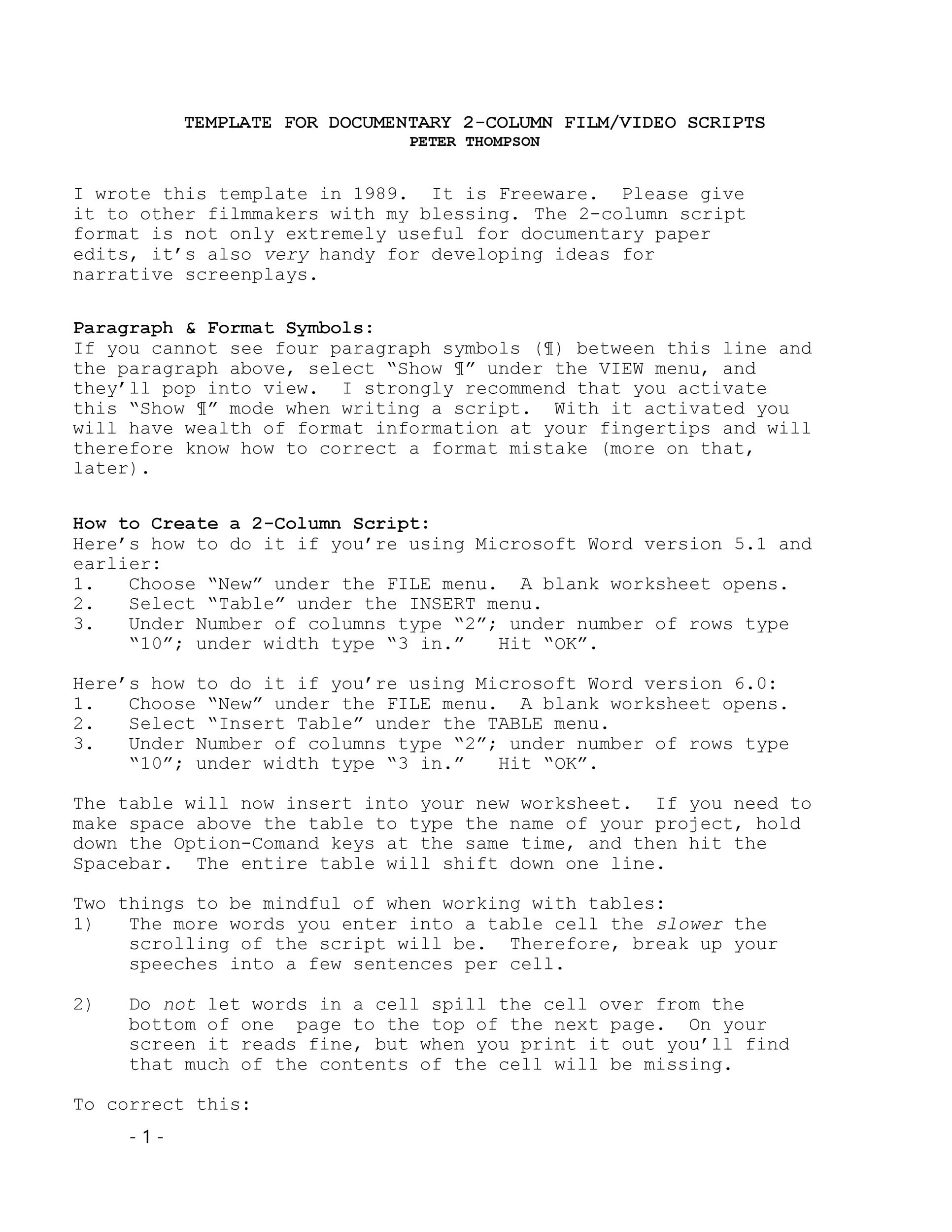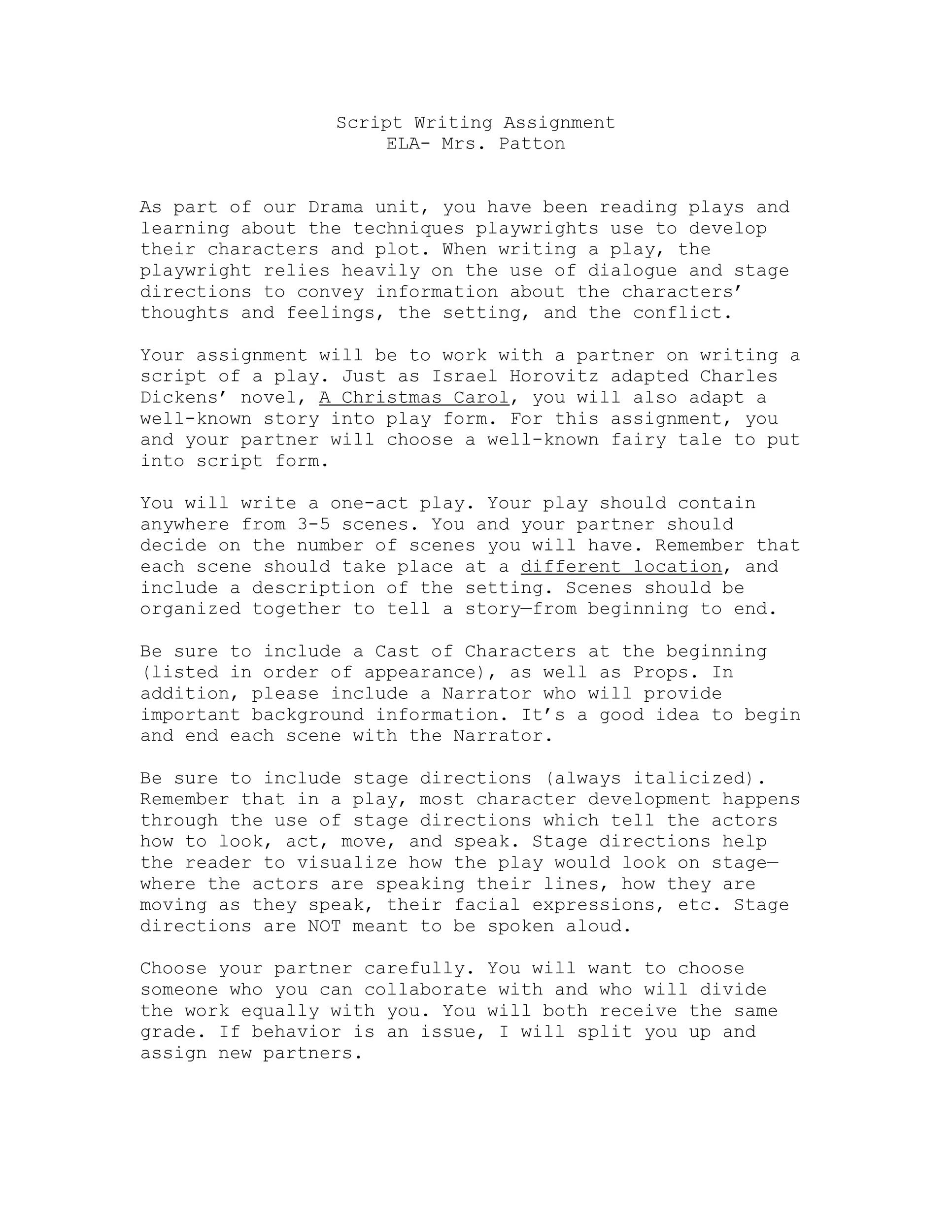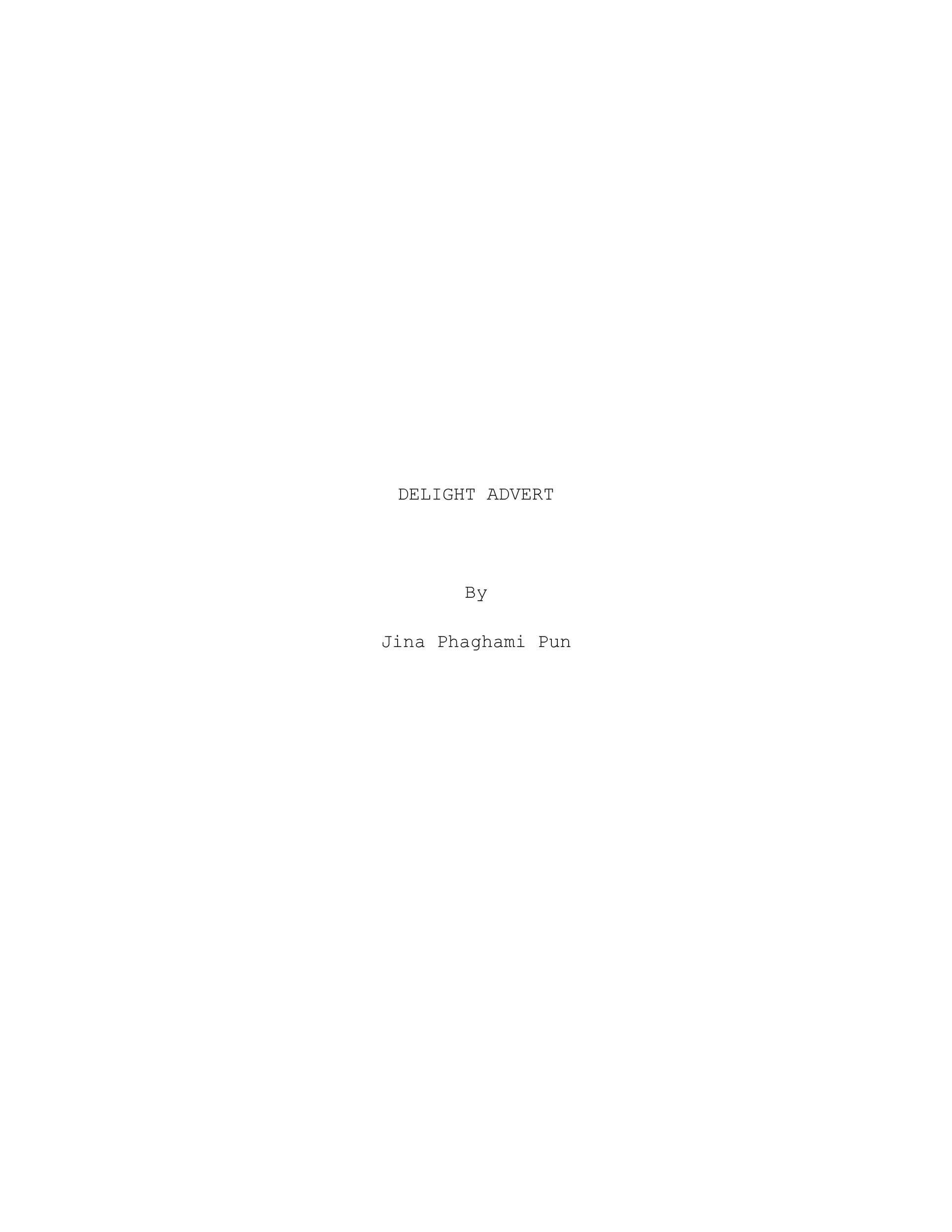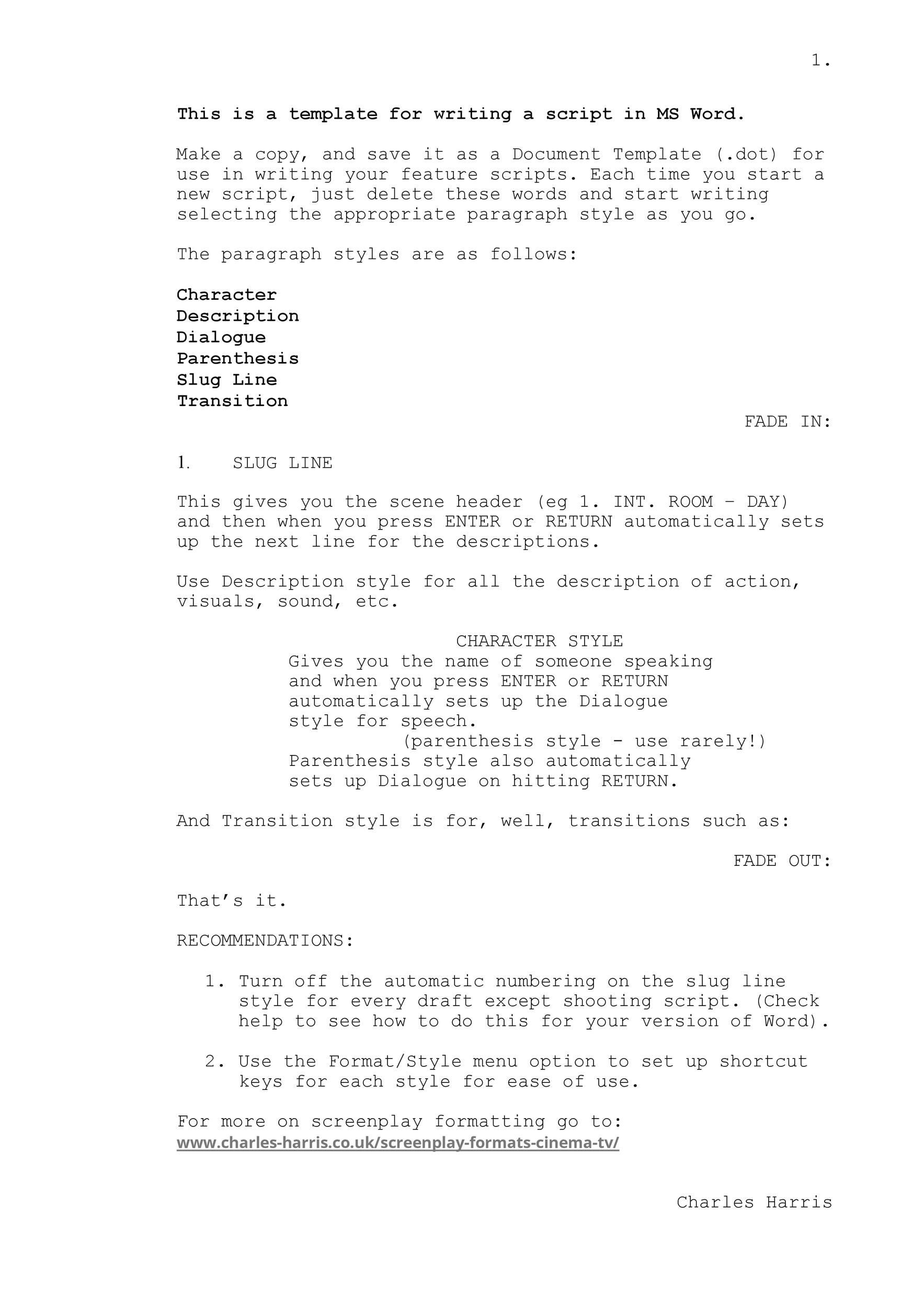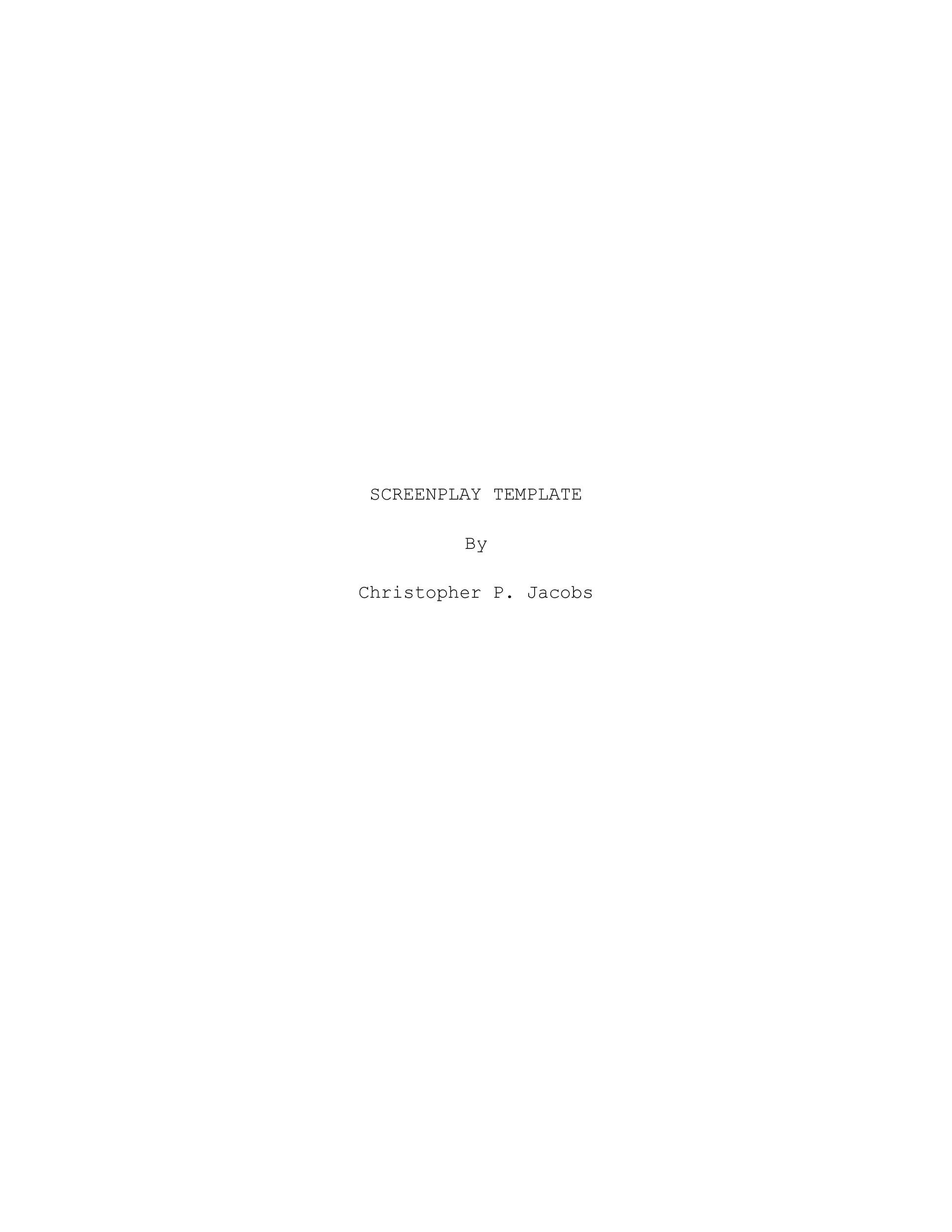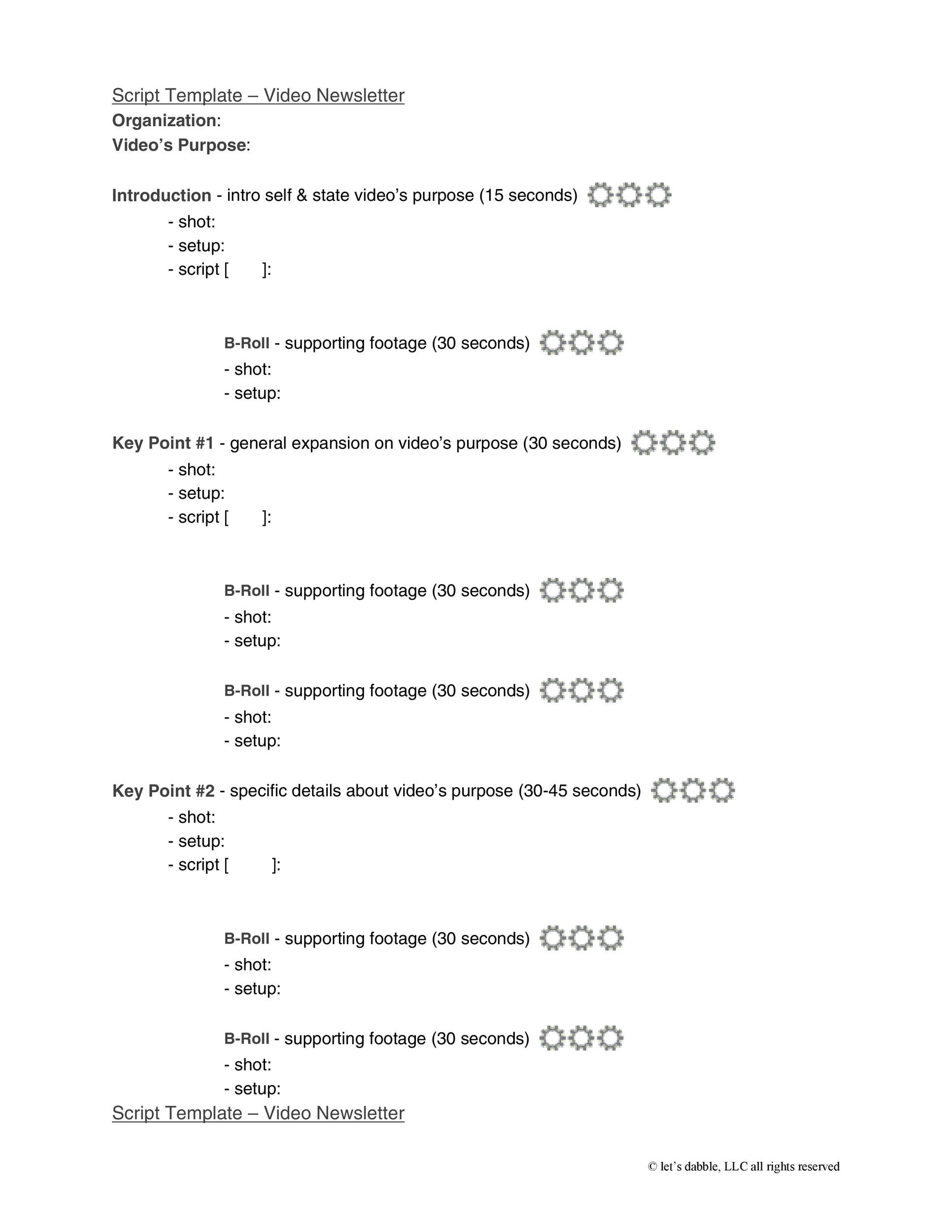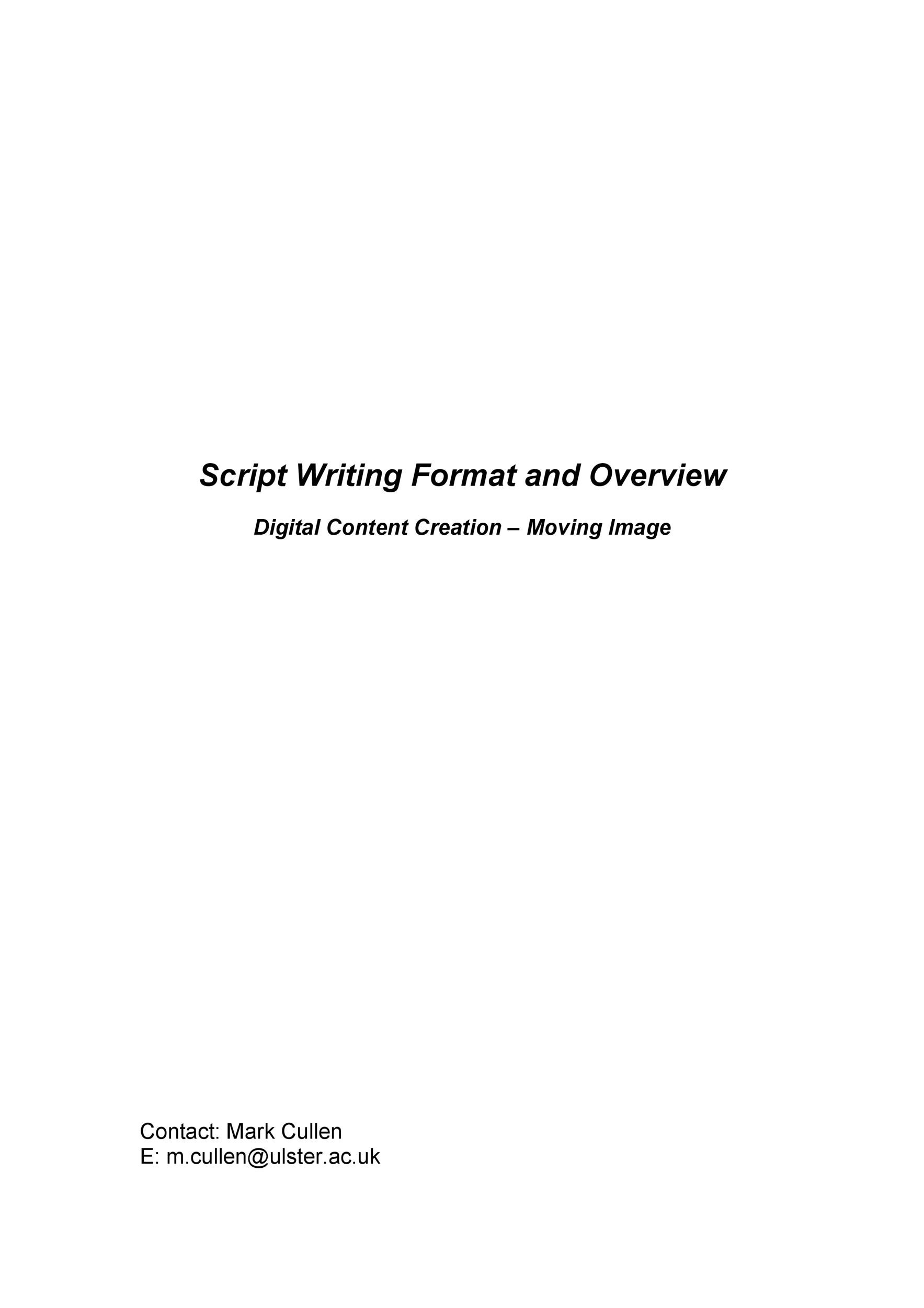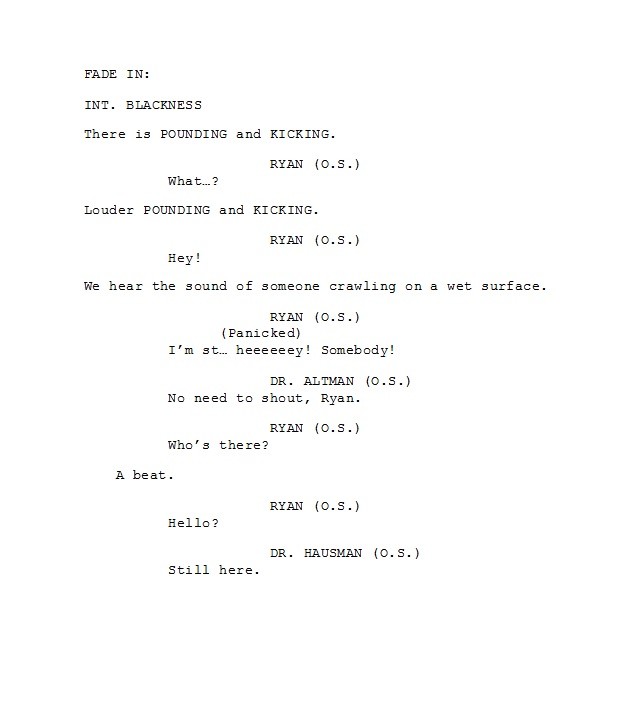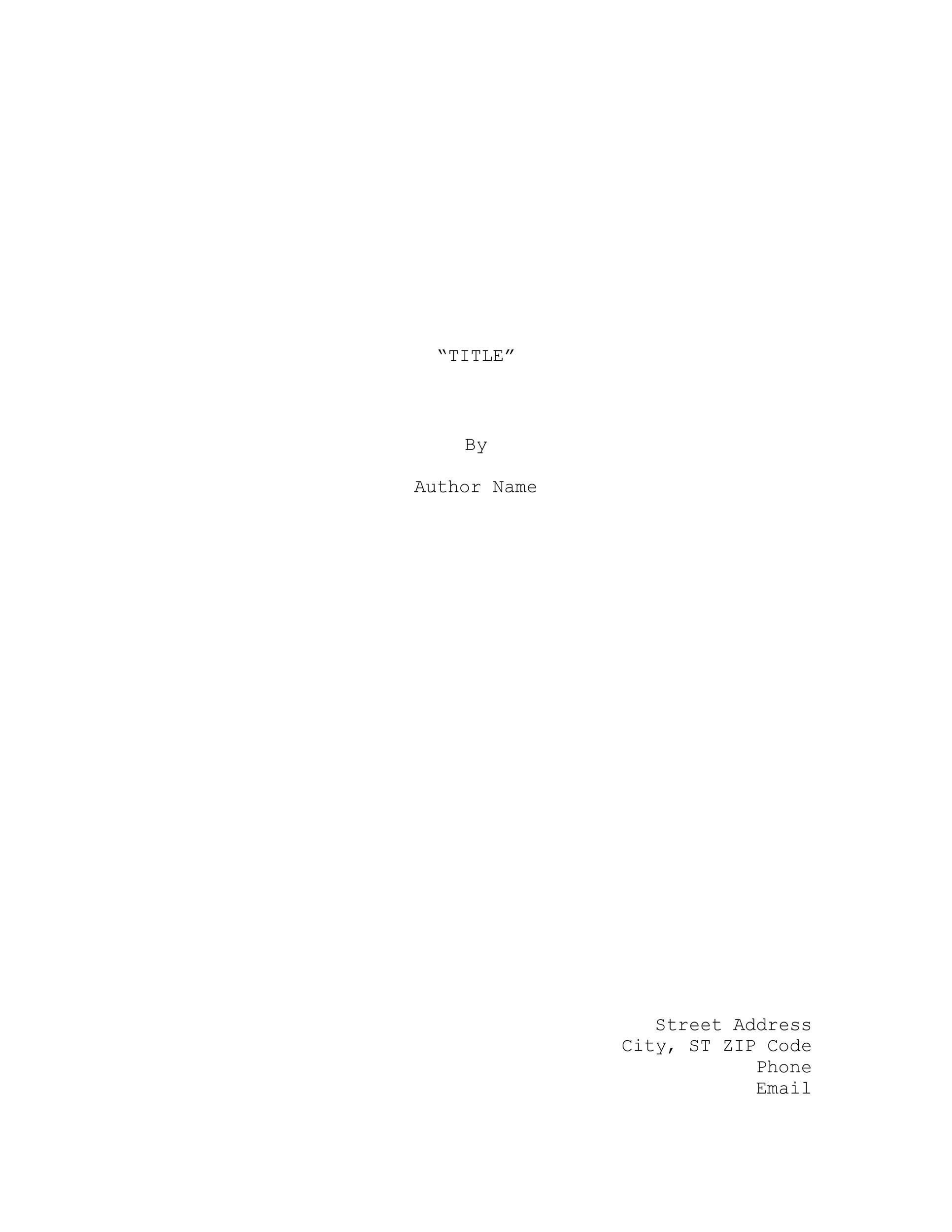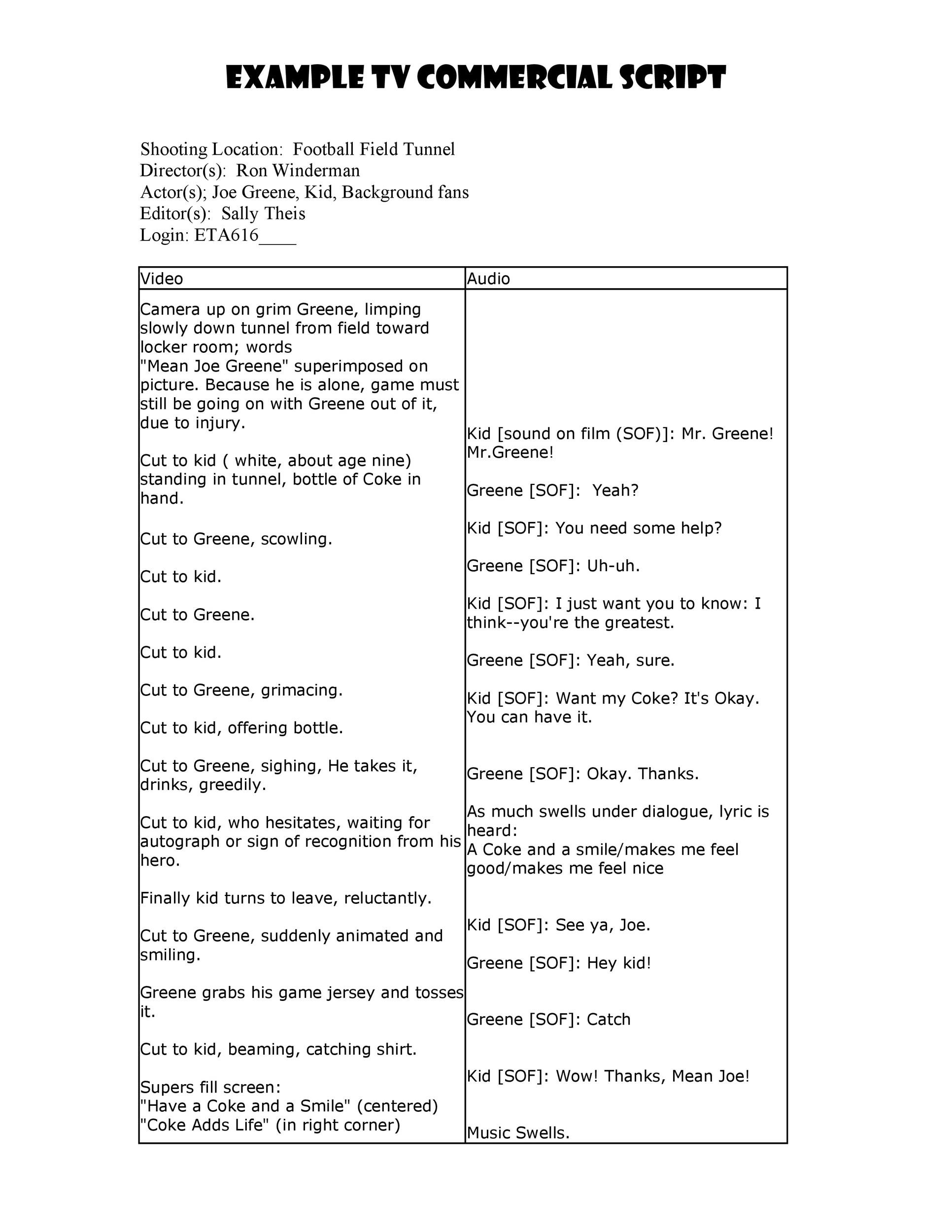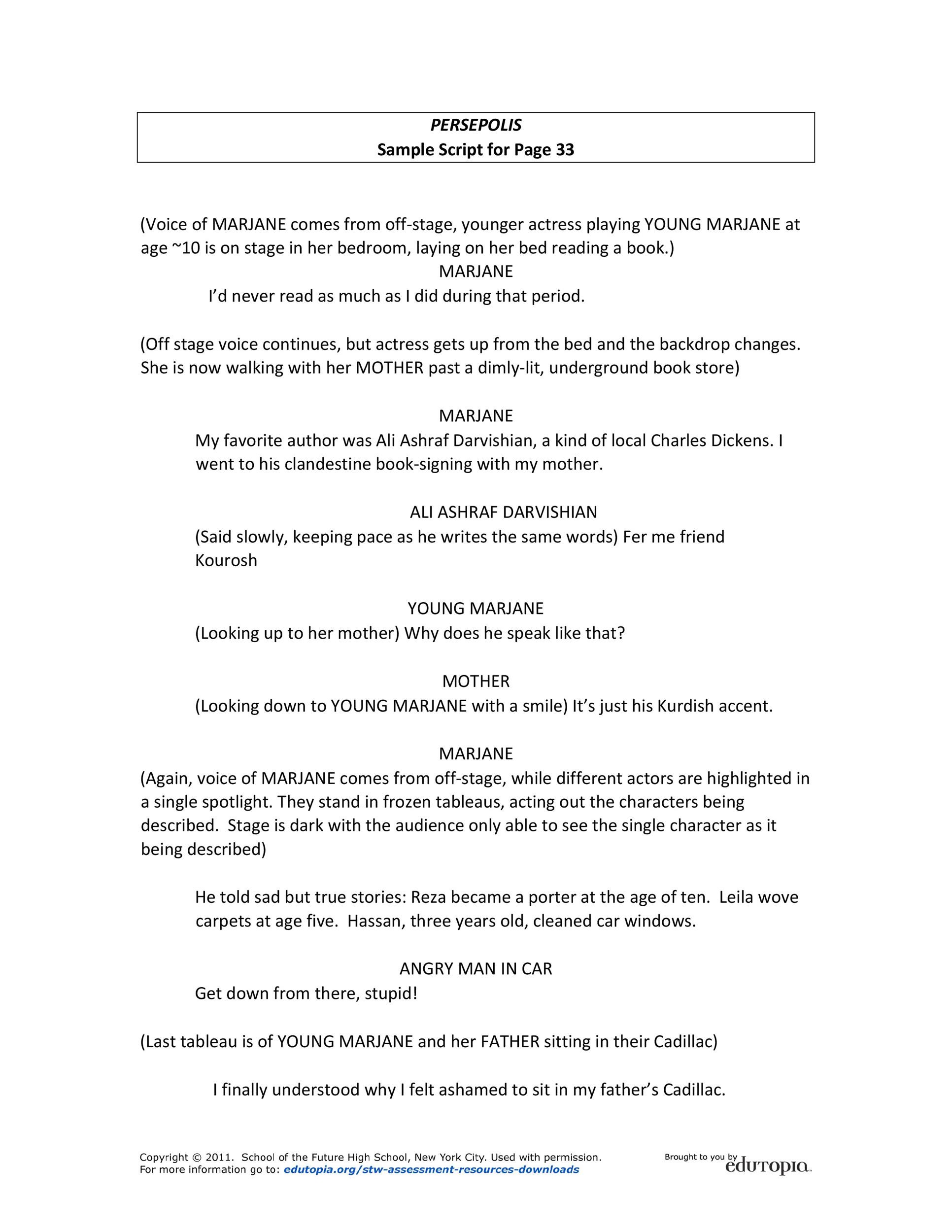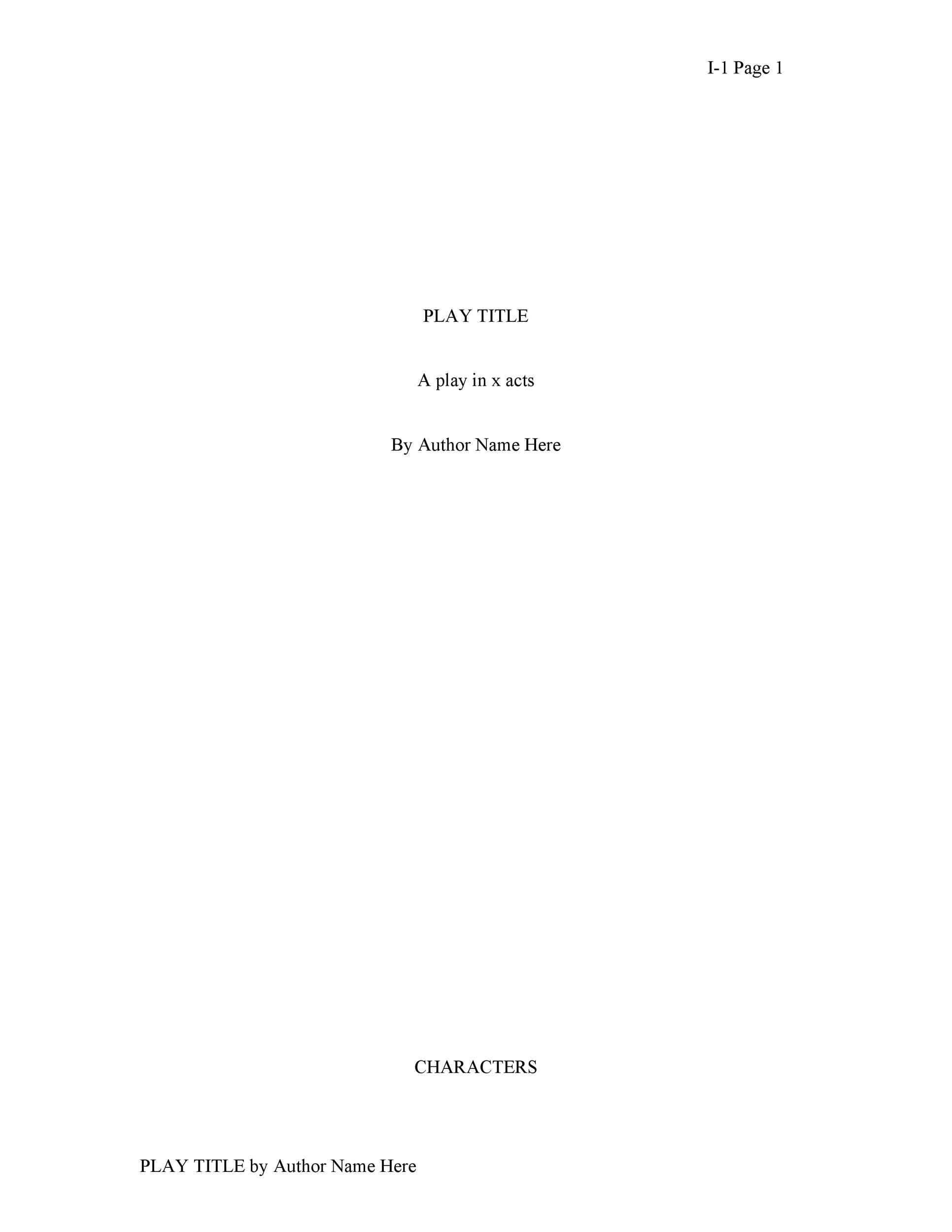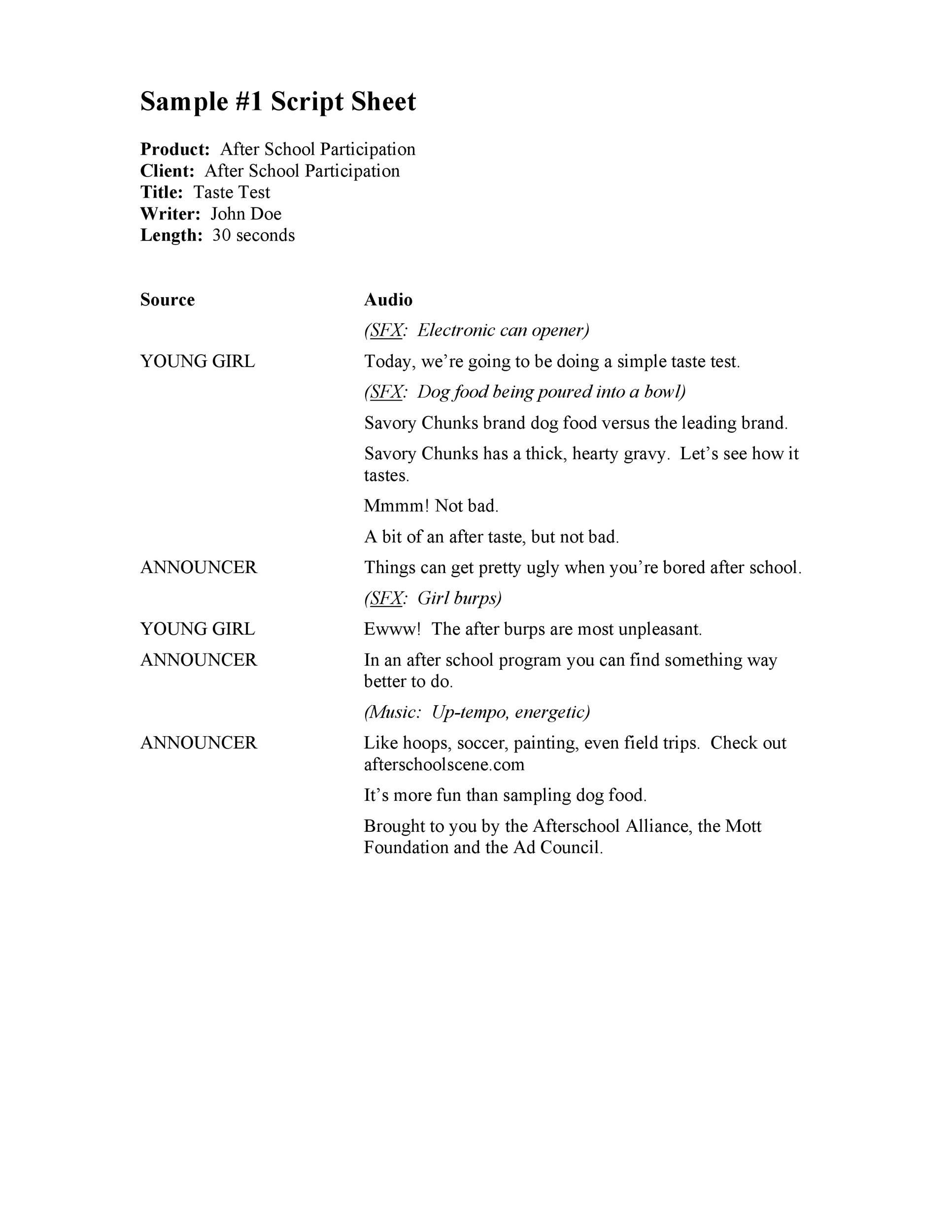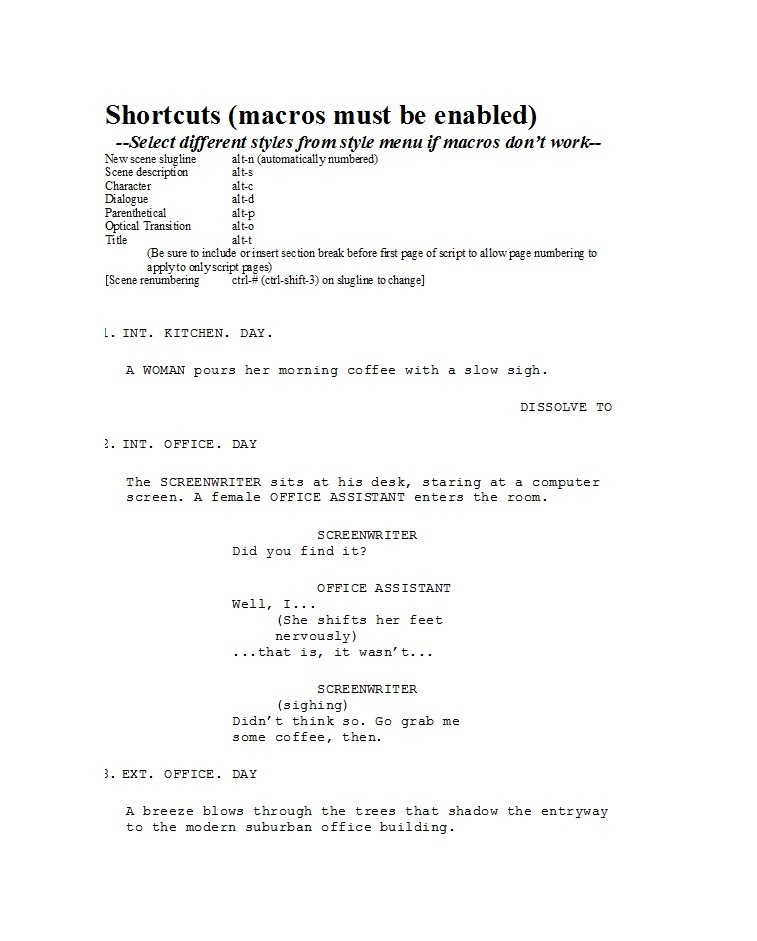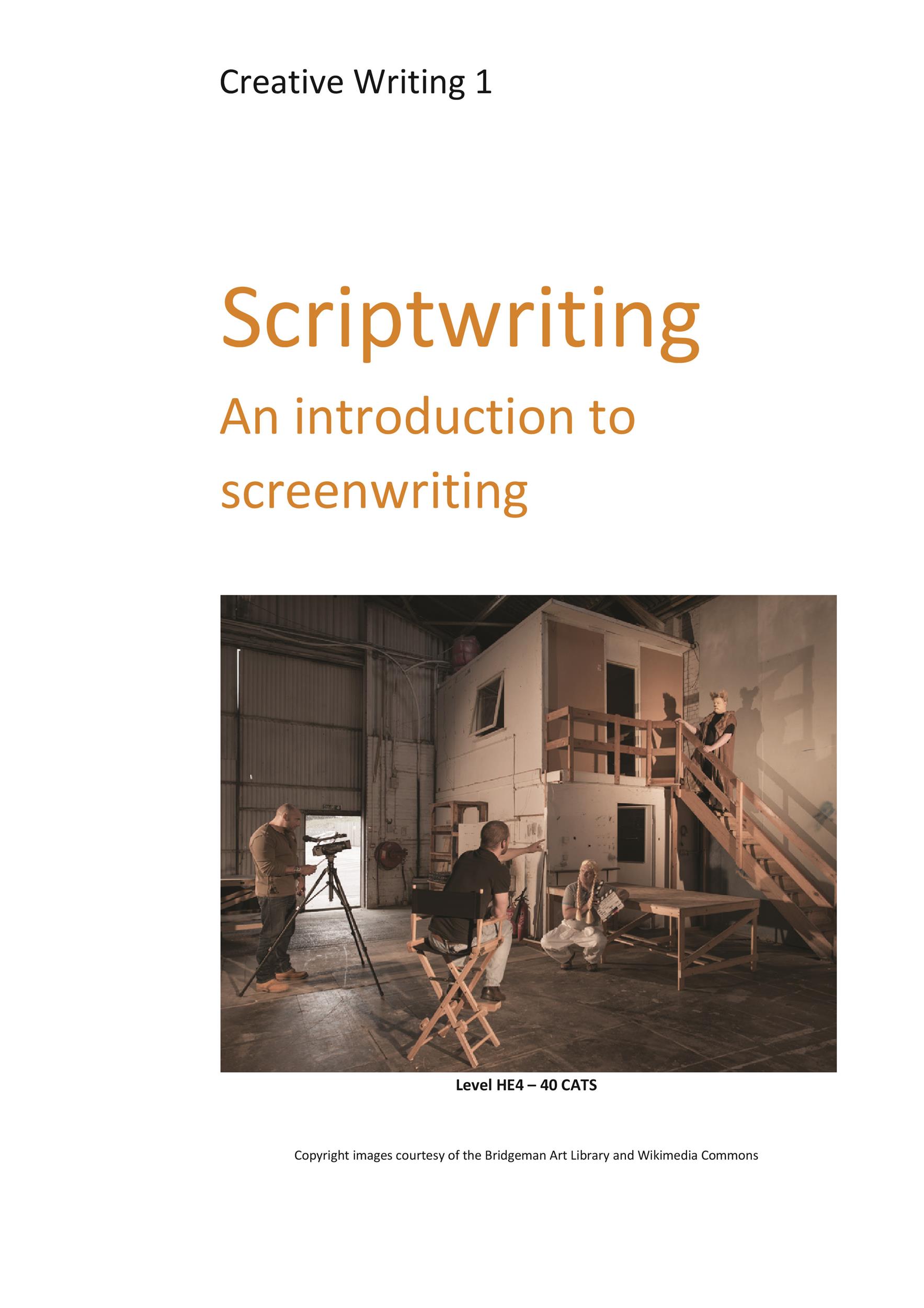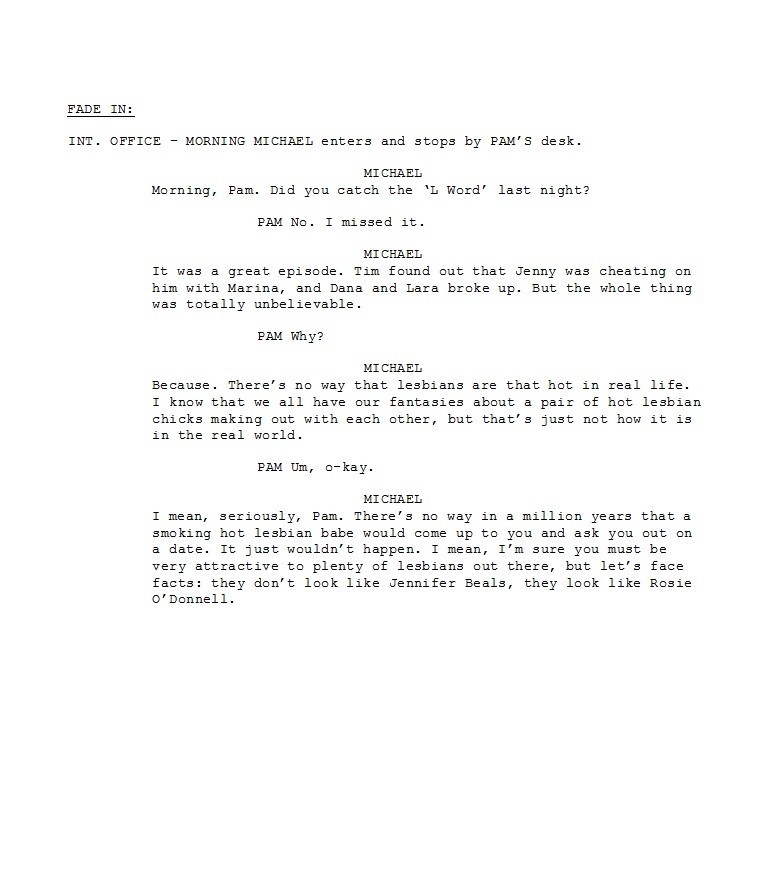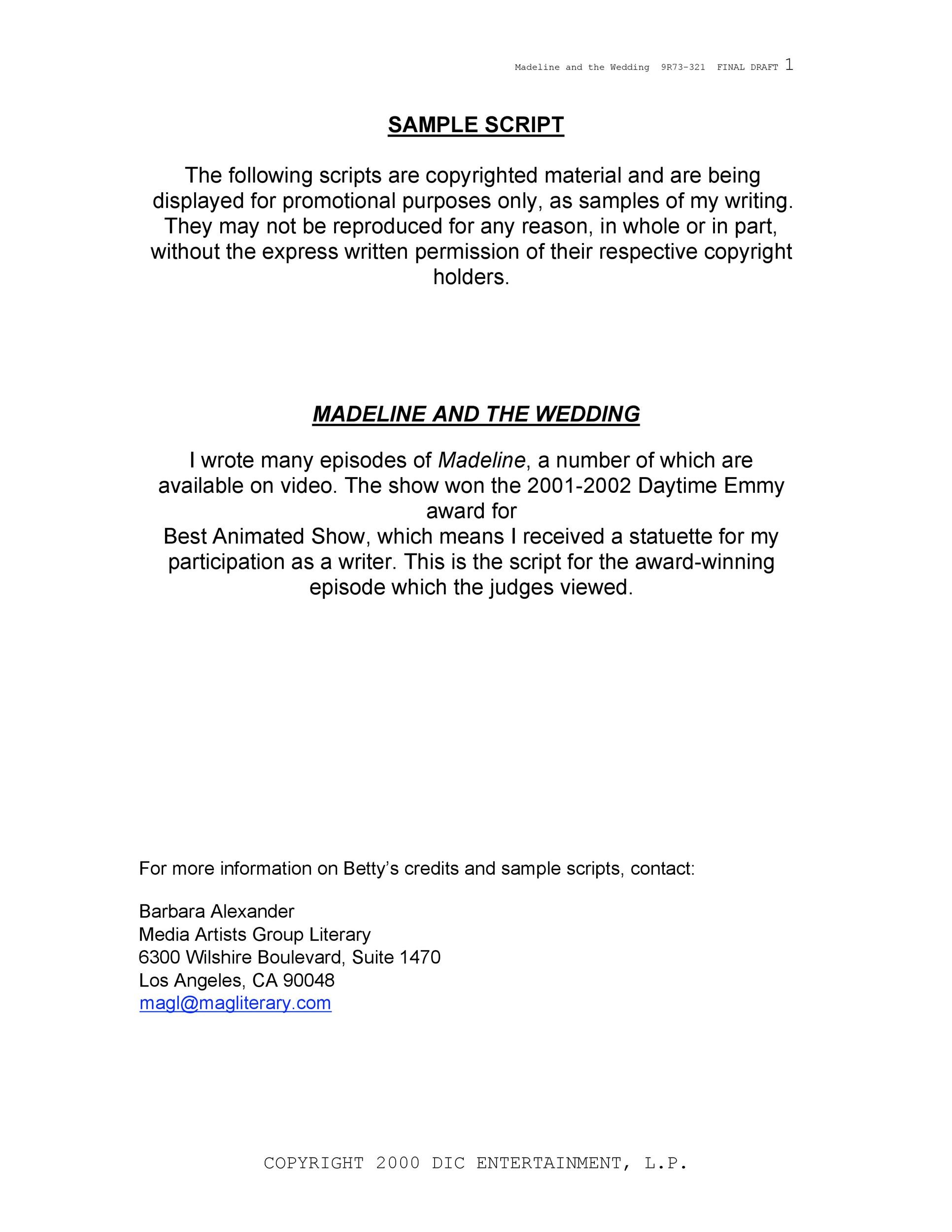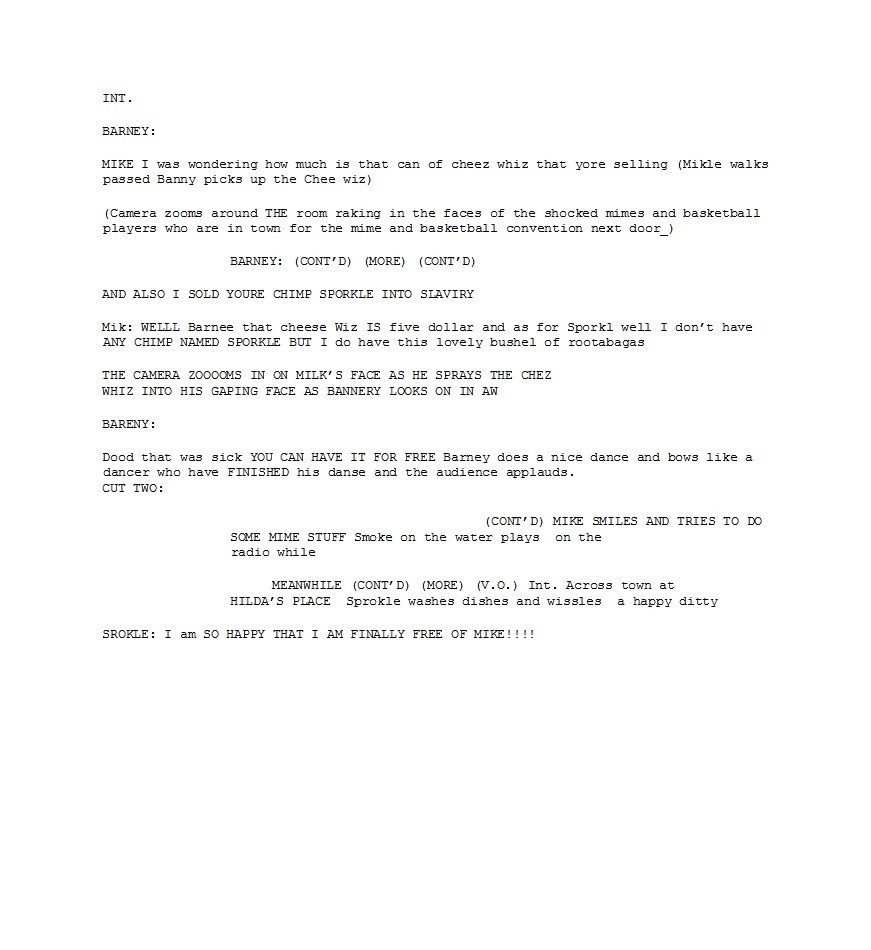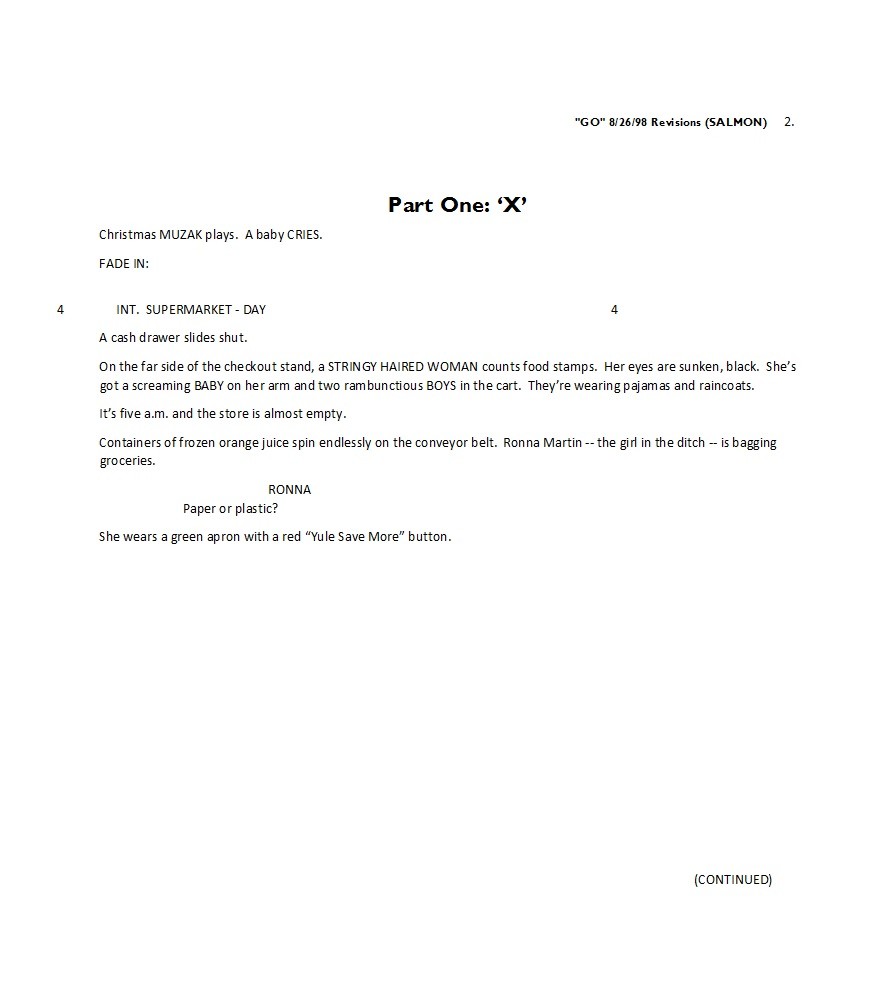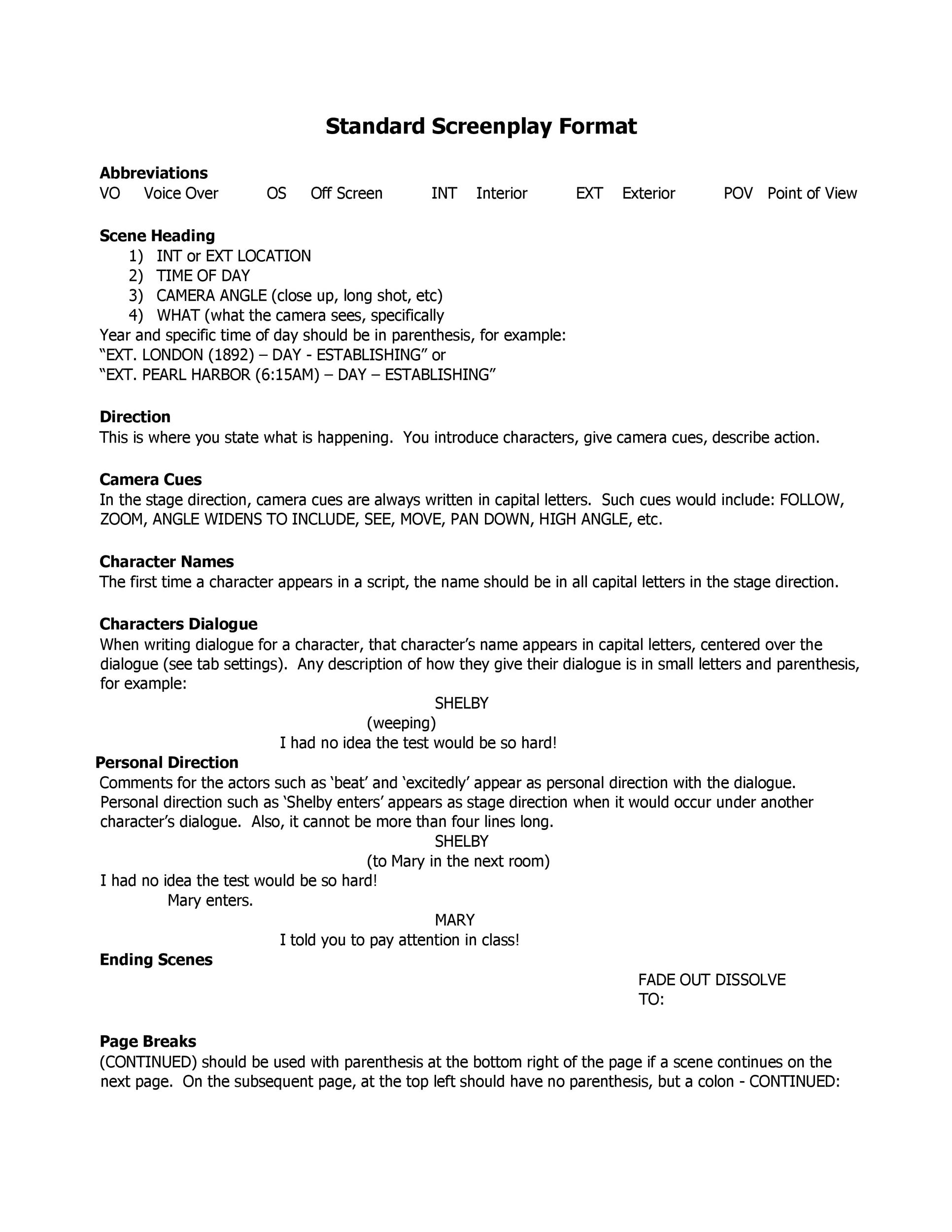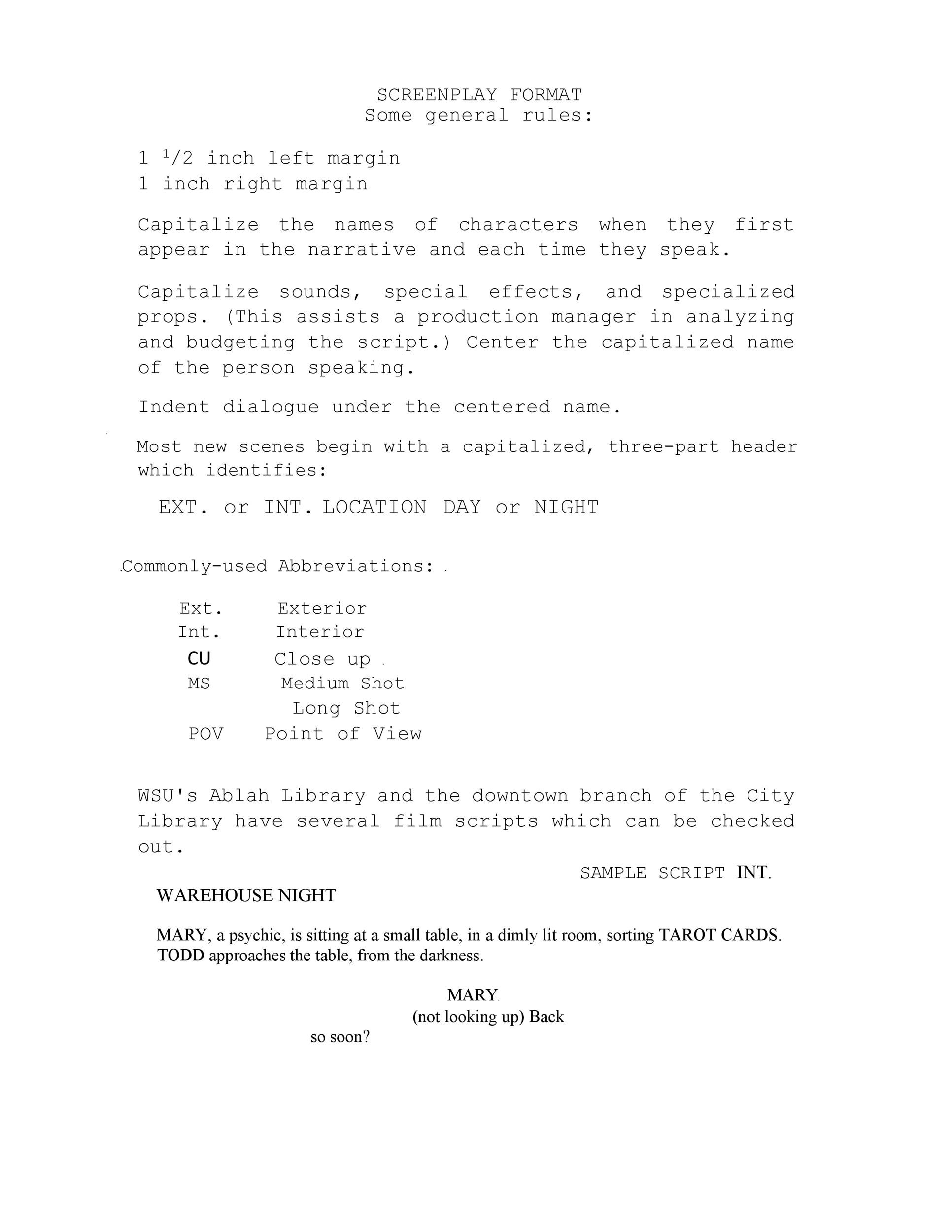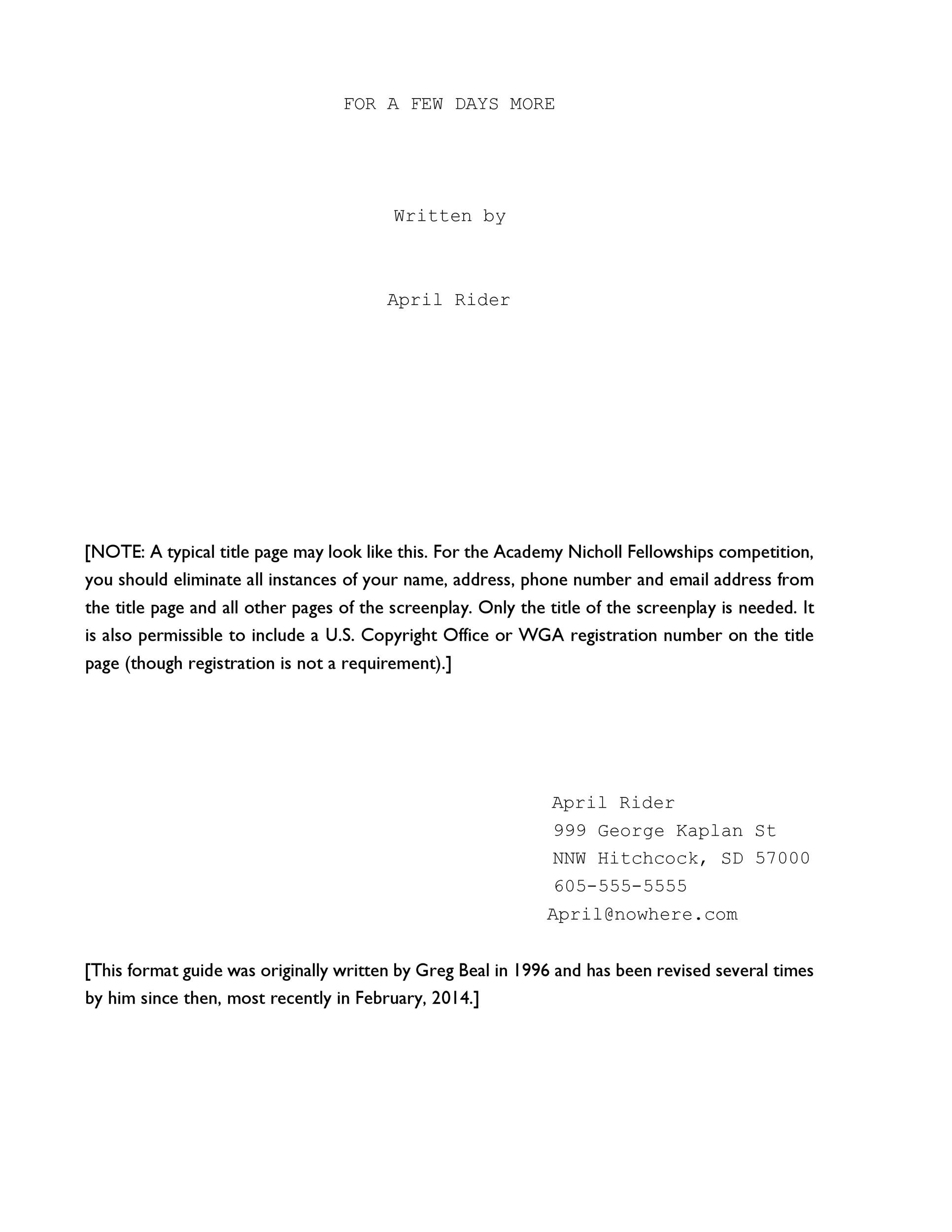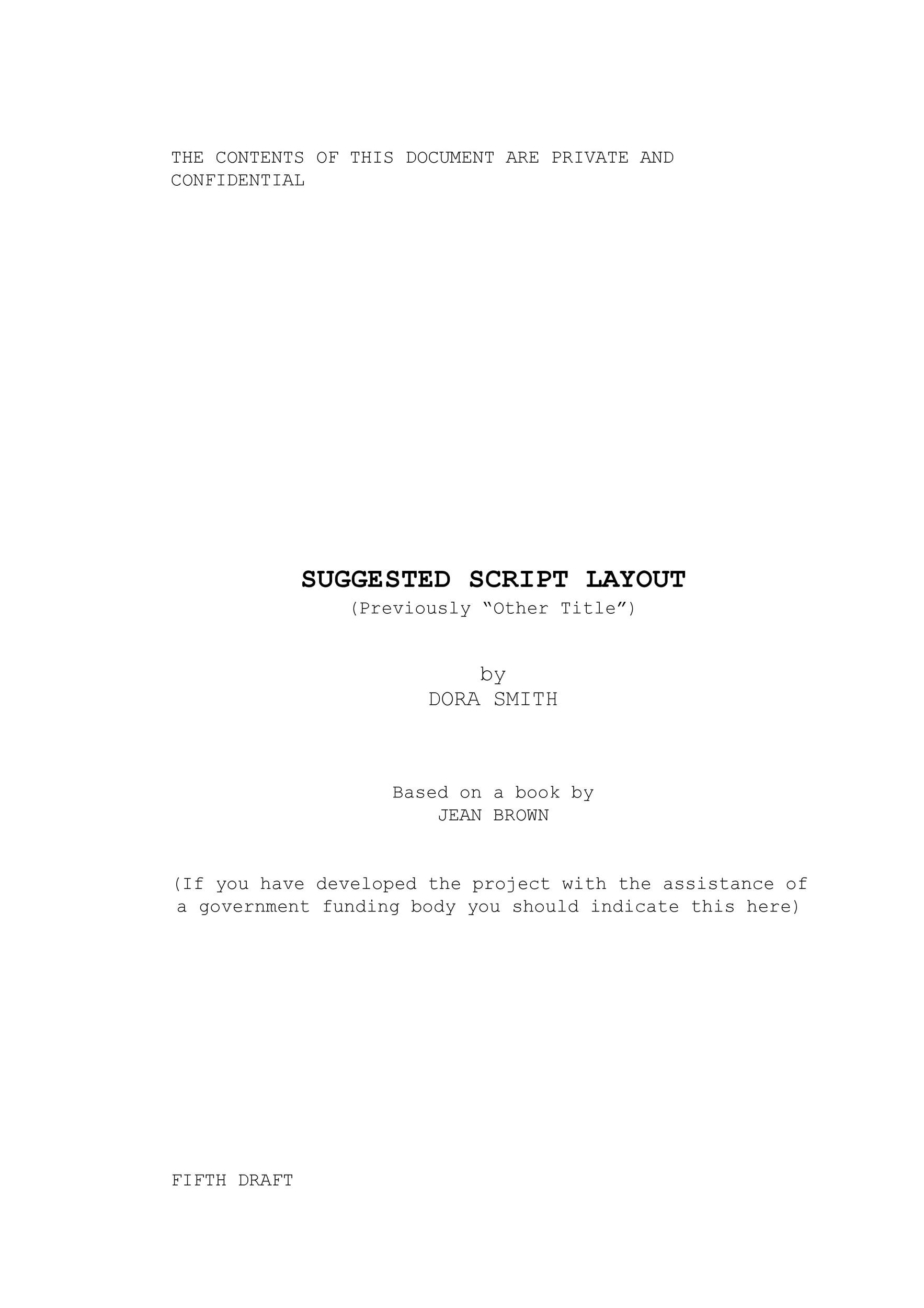A screenplay is a document written by screenwriters. There are certain rules to follow when creating a screenplay format. Typically, the document has 90-120 pages. You need to use a specific size of paper, font, margins, and more.
Have you ever asked yourself how to write a screenplay? It’s quite interesting, actually.
Just take the font of such template. You should use the Courier font when writing a screenplay. Why you ask?
Table of Contents
Well, it has something to do with the timing of the content. A single formatted page using this font is equivalent to a minute of screen time. This is also why the document would have 90-120 pages.
A 90-page screenplay would run for about 1 1/2 hours. While a 120-page screenplay would run for about 2 hours. Such templates can be originally written or based on other stories.
You can base the content on a previously written work or even on true events. The screenplay is the basic blueprint of a movie if it’s picked up by producers or directors.
If you’re lucky enough to have your screenplay made into a movie, different people will work on it. The usual people involved in the making of a movie will use their talents. They will all work together to make your vision a reality.
Screenplay Templates
The elements of a screenplay template
If you’re planning to make your own screenplay format, learn the different elements. Remember, screenplays are typically created a certain way. This means that you need to follow the format.
Nowadays, there is formatting software which you can use to create your document. But it’s still important to know the basics in case you want to make the screenplay yourself. Take a look at these elements:
- First page
The first page of the document has its own formatting. The right, top, and bottom margins should be 1-inch only. But the left margin is 1.5-inches. The extra half-inch is there to allow for binding. The first page and the rest of the document should only be single-spaced.
The first things you write on this page are the words FADE IN. Also, you don’t include this page in the numbering of the document. However, in the subsequent pages, the page numbers should be in the upper-right hand corner. - Scene heading
This is a one-line description of the setting. It includes the location as well as the time of day of the scene. It should reveal where and when the scene takes place. It should be in CAPS, and it’s also referred to as the “slugline.”
The width should be 6.0″ and indentations should be: Right: 0.0”, Left: 0.0″. - Sub header
When you don’t need a new scene heading, but you do need some distinction, you can use this. Use this within the scene but use them sparingly.
This is because screenplays which contain too many sub headers aren’t appealing. The width should be 6.0″ and indentations should be: Right: 0.0”, Left: 0.0″. - Action
This is a narrative which describes the events within your scene. You write this part using the present tense. This can also have different names. These include the scene directions, visual exposition, direction, description, or blackstuff.
Keep in mind that you should only write things which the reader can see and hear in the scene. The width should be 6.0″ and indentations should be: Right: 0.0”, Left: 0.0″. - Character
When you introduce a character within the action, capitalize the name. Aside from using CAPS, make sure to write the name above the dialogue lines. You can also include the names of minor characters using CAPS as well. The width should be 4.0″ and indentations should be: Right: 0.0″ , Left: 2.0″. - Dialogue
This refers to the lines of speech for each of the characters. You use this format every time your character speaks. Use it even for voice-overs or off-screen dialogues. The width should be 3.5″ and indentations should be: Right: 1.5″ , Left: 1.0″. - Parenthetical
This refers to the direction of your characters. It can be action or attitude-oriented. Nowadays though, screenwriters seldom use parentheticals. There are 2 important reasons for this.
First, it’s the job of the director to instruct an actor on how to deliver his dialogue. Second, you shouldn’t need a parenthetical to convey the message of the dialogue.
If you do, then you may need to consider re-writing your content. The width should be 2.5″ and indentations should be: Right: 2.0”, Left: 1.5″. - Extension
You place the extension right after the name of the character, in parentheses. The extension is a technical note that’s abbreviated. It suggests how the audiences will hear the voice onscreen. - Transition
This refers to instructions for film editing. Typically, you only use them when writing a script for shooting. If you’re writing a screenplay, you don’t have to include this element.
That is unless there’s no other way for you to indicate an element of the story. Some common transition terminologies are:
CUT TO:
DISSOLVE TO:
SMASH CUT:
QUICK CUT:
FADE TO:
The width should be 2.0″ and indentations should be: Right: 0.0″ , Left: 4.0″. - Shot
This element would inform the reader when the main focus of a particular scene changes. Just like the transition element, this isn’t as necessary for screenplay formats.
This is mainly because it’s the job of the director to determine the shots. The width should be 6.0″ and indentations should be: Right: 0.0”, Left: 0.0″.
Screenplay Format
Basic formatting elements of a screenplay template
When you’re trying to learn how to write a screenplay, you can go through different samples. Then you’ll notice that they have slight differences based on the screenplay’s type.
The differences would also depend on the personal preferences of the writer. However, when it comes to the format, you need to follow some rules. In fact, these are strict rules screenplay writers use when creating their templates. To help you out, here are some basic guidelines:
- Use a 12pt size of the Courier font
- The left margin should be 1.5-inches
- The right margin should be 1-inch, ragged
- The top and bottom margins should also be 1-inch.
- You should have approximately 55 lines on each page, no matter what the size of your paper is. Adjust your margins accordingly if you’re using smaller or bigger-sized paper
- The names of the dialogue speakers (in CAPS) should be 3.7-inches from the page’s left side.
- The parentheticals of the actors should be 3.1-inches from the page’s left side.
- The dialogues should be 2.5-inches from the page’s left side.
You should also include page numbers in the top-right corner of the page. Flush them to the right margin, about half an inch from the top of your pages.
Place a period after the number and start on the second page of your document. Remember that the first page which contains the title shouldn’t have a page number.
Screenplay Examples
How is a screenplay different from a script?
As you’re writing your template, you may think to yourself, “am I writing a screenplay or a script?” Is there a difference between the two or are they merely synonyms of each other?
If you’re looking for a short answer, then there’s no difference between them. Usually, they mean the same thing and people use them interchangeably. But when you’re dealing with different mediums, then their differences become more apparent.
When discussing what you’ve written, it’s best to be as specific as possible. Then you can specify if it’s for a movie, a short, a television show or others. The fact is, all screenplays are scripts but you can’t classify all scripts as screenplays.
The main purpose of writing a screenplay is so that you can have it played onscreen. This means that it should play on a movie screen, a television screen or even a computer screen.
But when you write a script, you can apply it to other mediums. These include stage plays, radio programs, video games, and more. So when you’re writing a screenplay, make sure it’s for playing on a screen.
Also, when you write a screenplay, don’t refer to yourself as a scriptwriter. Instead, you can call yourself a screenplay writer or a screenwriter. The term scriptwriter is very close to “script writer.”
The latter refers to a person writing computer scripts. It may not seem very important to you but it can make a huge difference on the internet. This is especially true if you want people to find you easily. Let’s say you call yourself a scriptwriter.
If a person does an online search he would most likely find results for computer programmers. Then people won’t find out about you. So as you can see, terminologies are very important, no matter what industry you’re in.
Script Templates
Creating the story structure for your screenplay template
A lot of times, writers debate whether to create an outline or not. If you’re writing a screenplay, it’s always better to write an outline for it. Work out your plot first so you can make better decisions on how your story will turn out.
You can think of the best way to tell the story to keep it compelling and relatable. Before you make your screenplay format, you should learn how to make your story structure. This doesn’t refer to story mapping or the formatting of the template.
Writing your screenplay based on your pre-made story structure will make it a lot better. Then you have a better chance of creating a screenplay which will appeal to producers. Making a story structure means you will arrange the elements of your story.
Arrange the elements in a particular chronological order. Do this to elicit the appropriate emotional response from whoever reads your document. The same thing goes when writing a screenplay.
In time, you want your screenplay to evolve into a movie. So you need to create a structure to arrange the elements of your story too. Story (or screenplay) structure can also refer to the way you organize the elements of your story.
The elements are the characters, reactions, events, and the outcomes of your story. You organize them so you can come up with a solid plot for your screenplay. Such structures are quite simple to make. The very basic principles of storytelling have evolved over the years.
Because of this, people understand them a lot better. They know when the lead should come in, when the plot should take a turn, and so on. Here are some tips for you when making your story structure:
- Give the readers what they want
Since you want your screenplay to get picked-up, you need to put a lot of thought into it. Audiences subconsciously expect certain things to happen at certain times in a story.
When you make a structure, you’ll be able to see all the elements of your screenplay. As you’re writing, you can modify things to keep the readers compelled to keep reading until the end. - Screenplay structure has two major elements
The first element is your story’s content. This is very important as it’s the heart of your screenplay. The second element is the form you use to convey your story. These elements are very important in screenplay structures. - Create the right pacing
When it comes to creating a great story plot, the pacing is vital. With the right pacing, you can keep your readers at the edge of their seats.
A fast-paced screenplay will definitely be a page-turner for producers and other executives. This will help keep them engaged in your work. - Think about your scenes
When writing your scenes, you’ll more likely edit them more than once. But with a screenplay structure, you can assign the goals for your scene. So even if you edit them, you still stay true to your goal. - Organize your outline
Before you finalize your structure, make sure it’s organized. Then you can use the structure you’ve created to guide you as you’re writing the screenplay. If you’ve made a great structure, it will help you out immensely.

